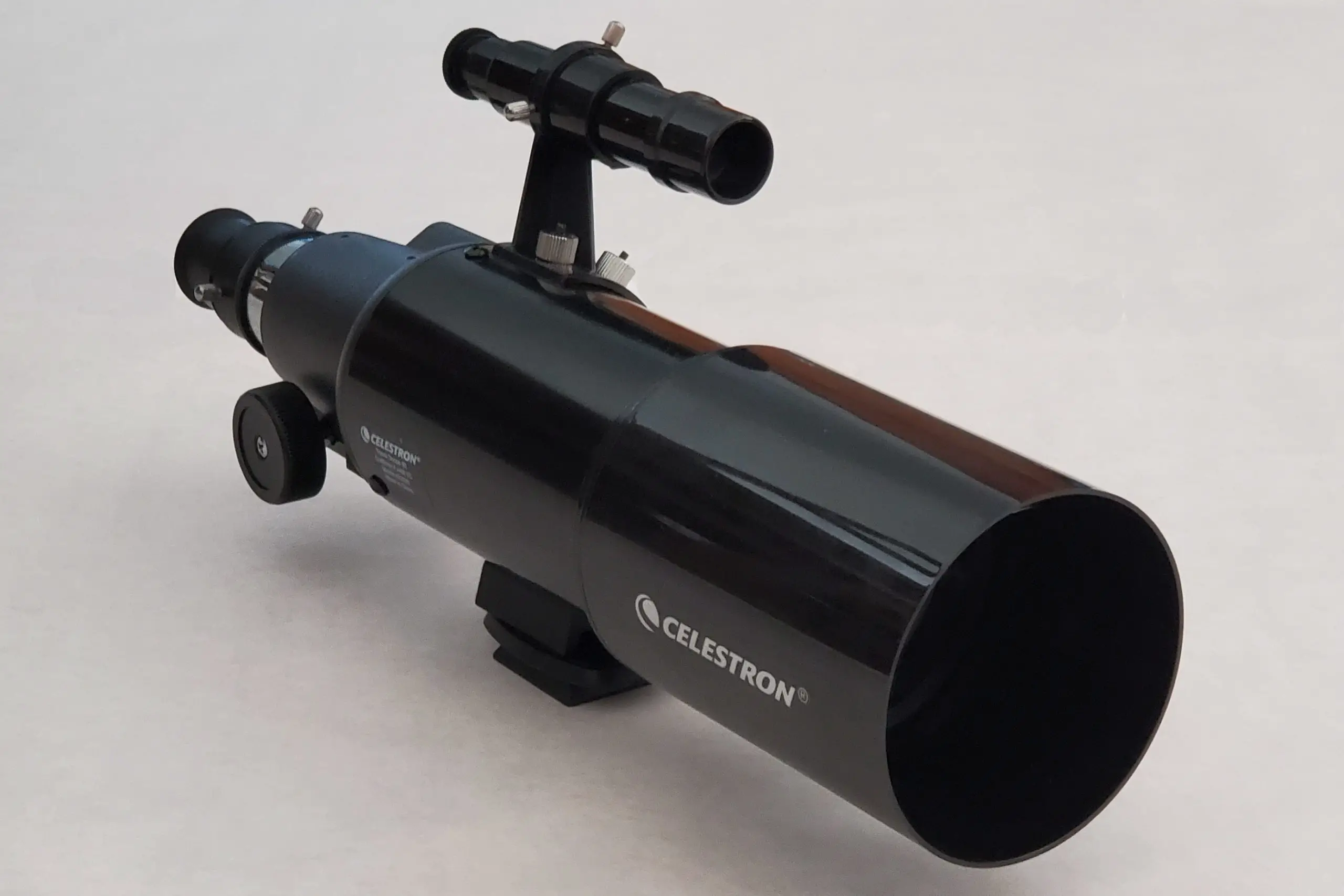

Celestron Travel Scope 80 Telescope Review
If you’re one of the millions of people who enjoy camping and looking up at the stars, then Celestron may have the perfect telescope for you. The Celestron Travel Scope 80 has been designed to be as lightweight and portable as possible, without making any sacrifices in quality. Have Celestron achieved their goal, or is the perfect scope for camping still a dream?
Our Score for the Celestron Travel Scope 80 Telescope
All Photos Credit: Richard J. Bartlett
About the Celestron Travel Scope 80 Telescope
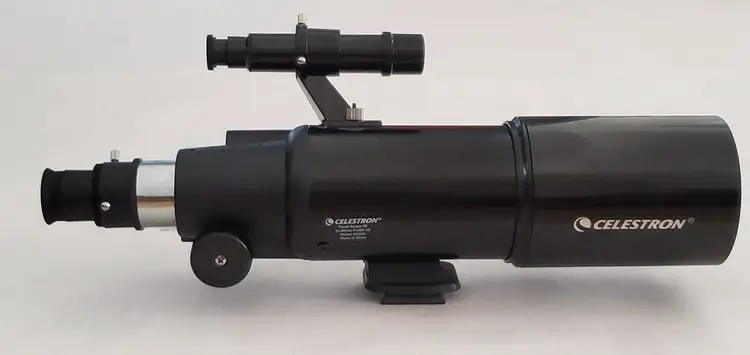
Packaging & Accessories
Celestron always puts care and attention into their packaging, and while this might seem like a minor point, it goes to show that Celestron takes the presentation of their products seriously.
The packaging for the Travel Scope 80 is no exception, with colorful imagery and an attractive design that’s sure to get kids excited . The box itself is sturdy and should provide adequate protection for the contents. Lifting the lid of the box will reveal the backpack inside, wrapped in tissue paper.
The telescope and accessories can be found securely packed inside the backpack and are wrapped in bubble wrap and tissue paper for additional protection.
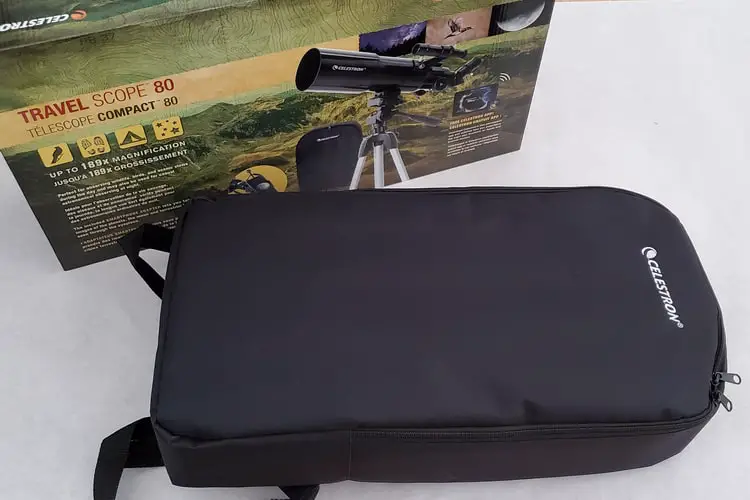
Besides the backpack, you’ll also find:
- The telescope itself
- A finderscope
- A 45 degree erect image diagonal
- Two eyepieces (20mm and 10mm)
- A smartphone adapter
- A download code for Starry Night Basic
- A cleaning cloth
- An instruction booklet
Incidentally, the specs on Celestron’s website state that an accessory tray is included with the telescope, but this wasn’t the case. No mention is made of it in the product description and Amazon doesn’t list a tray as being included either, so it must be assumed that the website is in error.
Also, unlike some of Celestron’s other scopes, there’s no barlow lens included. A barlow lens acts like a magnifier for any eyepiece used with it. By inserting an eyepiece into the barlow and then inserting the barlow into the telescope focuser, you can increase the magnification of the eyepiece by 2x, 3x or even 5x.
Although there’s no barlow included with the Travel Scope, this isn’t necessarily a problem as they can be bought online for a low price. For example, Celestron’s Omni 2x Barlow is a great, inexpensive option.
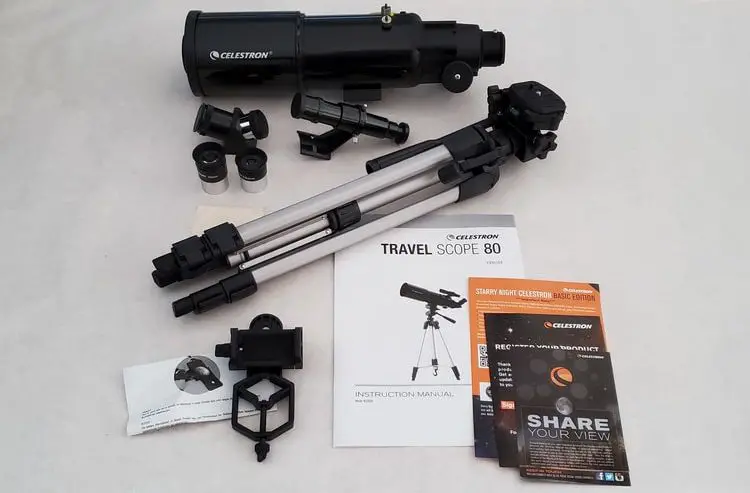
However, Celestron has included two items that could prove useful for anyone looking to get the most out of their telescope . Firstly, there’s the smartphone adapter. This allows you to attach almost any smartphone to the telescope and capture images and video of what you see through the eyepiece. The adapter has a retail value of $19.95
It’s also worth pointing out the software you get for free with this telescope. Starry Night is a respected planetarium program that allows you to view the night sky and get ideas for targets to observe with your telescope. You’ll get a download code for the Basic version, worth $49.99, giving this telescope package additional value for money.
The 11-page instruction booklet provides details on how to assemble the telescope and includes photos to help you. There are also three short General Observing Hints at the back, with an emphasis on terrestrial rather than astronomical observing, and a note to the effect that while the telescope is designed for terrestrial use, it can also be used for “casual astronomical observing which will be discussed in the next section.”
Unfortunately, the bottom half of this page is blank, and the astronomical section is missing entirely, as are the specifications for the equipment. While neither one is essential, it would be nice for Celestron to have included the information, especially since the astronomical section has been specifically mentioned and users might well be expecting it.
Quality & Durability
Despite the relatively low price of the scope, you might be forgiven for thinking that you’d be getting correspondingly low-quality optics, but fortunately, that’s not the case. Celestron has a reputation for quality optics and the Travel Scope 80 is no exception.
The telescope itself (also known as the Optical Tube Assembly , or OTA) is made of aluminum and is 457mm in length. The aperture (ie, the lens) is 80mm in diameter, while the height, from the adapter that attaches to the mount to the top of the finder, is just under 191mm. It has a focal length of 400mm and weighs 2.4 pounds.
The optics are fully coated (similar to the lenses on binoculars) and there’s also a standard CG-5 dovetail slot if you want to replace the original finder.
The tripod, like the telescope optical tube, is made of aluminum. At 1.8 pounds, it weighs less than the telescope and can be easily collapsed and transported to another location. (The total assembled weight is 4.2 pounds.)
It’s a standard photographic tripod that can also be used with a DSLR, smartphone, or binoculars , although you’ll need to purchase an adapter if you want to attach any other optical equipment. Unfortunately, Celestron’s website makes no mention of the maximum load weight.
There’s a quick-release mounting plate that securely holds the equipment in place, but be careful not to accidentally move the release lever as whatever is attached will drop to the floor!
Lastly, there are two small levels – one at the top of the legs and the other on the mount – that can help to ensure the tripod is on an even surface.
As far as the supplied finder goes, it’s pretty basic but should be fine for terrestrial observation. It has an aperture of 24mm and a magnification of 5x, making it easier to locate objects that would normally elude the naked eye. The finder also has crosshairs that many observers will prefer over the more common red dot finders that are regularly supplied with other scopes.
The supplied diagonal is what’s known as an erect image diagonal . Usually, a refractor telescope will flip and reverse the view of the object; this is due to the configuration of the lenses within the telescope. An erect image diagonal corrects this, thereby making it possible to observe terrestrial objects.
While it’s not the highest quality diagonal on the market, it’ll work perfectly well with the Travel Scope or almost any other refractor you own.
The two eyepieces are 1.25” Plossls of standard quality, so while they’re fine for use with any compatible telescope, if you want a better quality image, you’ll need to buy a better quality eyepiece,
The magnification of each eyepiece is easily calculated by dividing the focal length of the telescope (400mm) by the focal length of the eyepiece. The larger eyepiece has a focal length of 20mm, while the smaller is 10mm, producing magnifications of 20x and 40x respectively.
The smartphone adapter is Celestron’s basic model and works with any eyepiece with an outside diameter of between 29mm and 45mm. It should also be able to fit most smartphones, including the Apple iPhone and Samsung Galaxy (although you may need to remove the case.)
The soft backpack is really meant to carry your telescope and accessories rather than protect them. It measures 20 inches in height, 11 inches in width, and is 4 inches deep. There’s a relatively shallow pocket on the inside but no outside pocket, which, arguably, is where it could be most useful.
There’s a wide band that goes across the optical tube and tripod that also has two small pockets, and while you could fit filters inside, neither of them have a zipper or flap to close the pockets and you risk having the contents fall out as a result.
The band won’t do much to protect your scope or tripod either, and while there are velcro straps to hold them in place, both are too long to hold either the telescope or tripod securely. There’s no way to adjust the straps either, so both the tripod and the telescope will be loose. One solution is to apply your own velcro patch to the straps so they can adequately hold the equipment in place.
Similarly, the pockets don’t have much room for the eyepieces, star diagonal, and smartphone adapter, leaving you with either having them loose at the bottom of the backpack or having to bring along a second case for the accessories.
Assembling the Scope
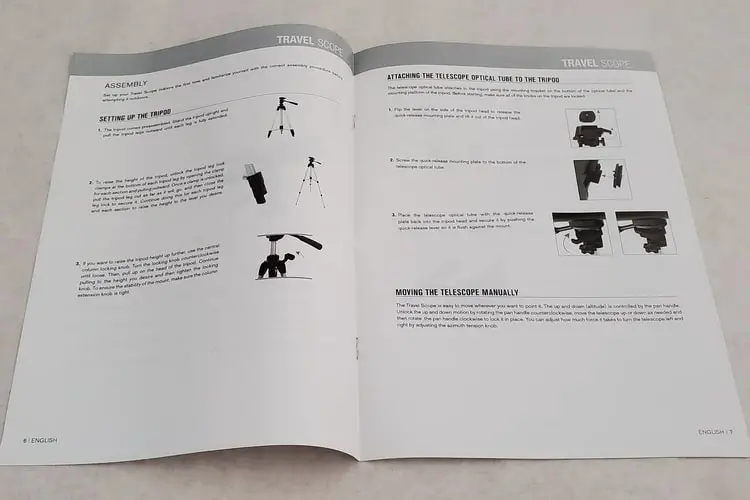
One of the best things about the Travel Scope 80 is the ability to quickly and easily assemble it. Once you know what you’re doing, you’ll be able to put it together in about two to three minutes (although aligning the finderscope will take longer.)
The tripod height can be adjusted from 22” (559mm) to 52” (1321mm) by extending the legs and the central column. Each leg has two clamps that allow you to extend and then lock the leg to the desired height. There’s also a central column that can be raised to bring the tripod to its full height.
The instruction booklet mentions loosening the central column locking knob to raise the column, but the image depicts a handle. The knob only locks the central column in place, while the handle needs to be turned clockwise to raise the column.
On the scope I received, the only way to raise the column was by turning the handle, but the text of the instructions didn’t mention anything about it.
A word of warning: be careful when turning the handle to adjust the height of the column. Turning the handle clockwise will raise the column, while turning it counterclockwise will lower it. However, if you accidentally turn it counterclockwise when the column is fully retracted and the knob is loose, the column will continue to retract, pushing the mount off the column in the process.
This isn’t a huge problem in itself, as the mount can be pushed back onto the column again, but if your equipment is attached to the mount at the time, it could cause some serious damage.
(It may be simply a fault with the tripod I received, but without another Travel Scope to test it’s impossible to say for sure.)
The trickiest part of assembling the scope is aligning the finderscope so that when your target appears in the center of the finder crosshairs it also appears in your eyepiece. You’ll need to do this during the daytime by first sighting a terrestrial target (for example, a distant building) through the main scope. You’ll then need to adjust the three screws of the finder so that your target appears at the center.
There’s a trick to this that’s worth bearing in mind. The finder is wider at the lens end, so be sure to push the finder all the way through the holder until it won’t move any further along. It should be fairly tight, but you’ll still be able to move it slightly. Now you can adjust the screws so that the target is at the center of the crosshairs and the finder is firmly in place.
If you intend to store the telescope in the backpack, you can either leave the finder attached to the optical tube or remove it. Either way, it’s almost impossible to put the scope in the bag without knocking the finderscope, which means you’ll need to realign it again. The alternative – removing the finderscope completely – obviously has the same end result.
Ease of Use
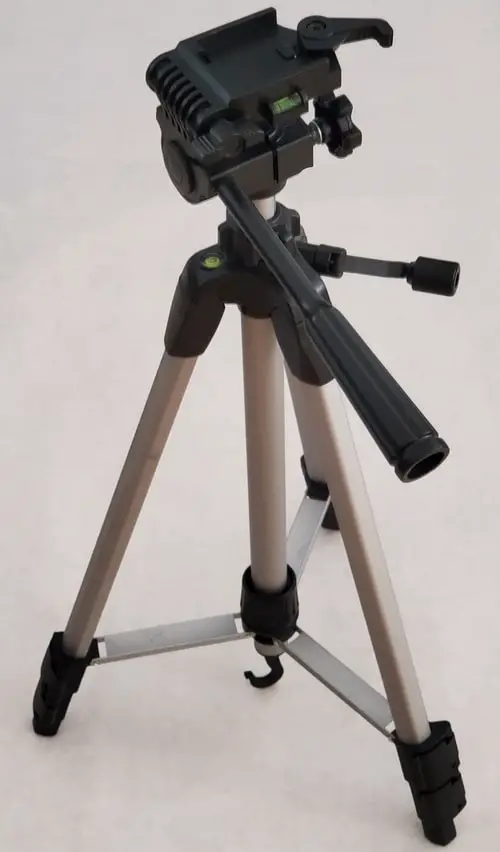
Since the Travel Scope 80 is mounted to a regular photographic tripod, the telescope is very easy to use. By moving the panhandle in a horizontal or vertical motion you can easily aim the telescope at your target. Once you have it in your sights, the vertical axis is locked by turning the panhandle while the horizontal axis is locked by tightening the knob on the side of the mount.
Realistically, the tripod is a little short to comfortably use the finderscope, even with the tripod extended to its full height. You’ll need to either bend over or crouch slightly to see through it, which can obviously be an uncomfortable experience.
Being lightweight, the tripod itself feels too light and flimsy; as I aimed the scope I found the tripod could be easily tipped over. Aiming the telescope also causes the finderscope and eyepiece view to shake; you’ll find yourself unconsciously placing your fingers on the optical tube to steady it.
Once you’ve centered your target, you can lock the optical tube in place to prevent the tube from moving. Unfortunately, locking the scope also causes the optical tube to move slightly to the left and upward, resulting in your target potentially disappearing outside of the eyepiece field of view.
Again, like the similar issue with the finderscope, this isn’t an uncommon problem, but it can make targeting a tricky and frustrating experience.
You’ll need to make sure the scope is tightly locked in place, as the optical tube can be easily moved and adding accessories (such as a heavy barlow lens or eyepiece) will cause the focuser end of the tube to drop.
The 45 degree diagonal is used to make observing a little more comfortable. After inserting an eyepiece and attaching the diagonal to the end of the telescope, you’re then able to turn the diagonal so that the eyepiece is at a more convenient angle.
This allows you to look through the eyepiece without having to contort yourself. This is especially useful when your target is nearly overhead and the eyepiece would otherwise be pointing at the ground!
In terms of the free smartphone adapter, this was also tricky to set up and use. The instructions state that it can be used with most cell phone cases, but the reality is that you’ll probably need to remove it.
The biggest problem with the adapter lies in aligning the smartphone camera with the eyepiece, as this can be fiddly to say the least. To achieve this, you’ll need to adjust the screws and move your phone until the view through the eyepiece can be seen on your smartphone screen.
It sounds simple enough in principle, but you could find yourself moving everything around for quite some time before you get the result you want.
Here are some pointers to help you (that aren’t in the instructions):
- Use the eyepiece with the longest focal length. The longer the focal length, the wider the eyepiece lens and the easier it is to align the smartphone. In the case of the Travel Scope 80, this is the 20mm eyepiece.
- Folding the rubber eyepiece eyeguards down will allow your smartphone’s camera to get closer to the eyepiece lens.
- Make sure the telescope is firmly locked into position, as the additional weight of the adapter and smartphone will easily drag it down.
- Don’t tighten the screws all the way when aligning the smartphone and the eyepiece. By allowing a little movement you can fine-tune the camera placement for the best view.
- Zoom in with your smartphone’s camera to minimize vignetting, but be aware that the more you zoom, the lower the quality of the image.
- Use your camera’s shutter delay setting (if it has one) or a bluetooth remote to avoid shaking the camera and telescope when taking the picture. A ten second delay should be fine.
Performance
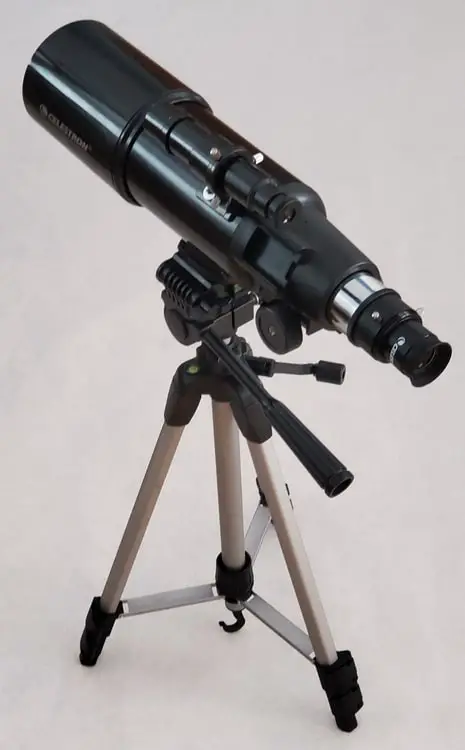
The first thing you should be aware of (especially if you’re using the telescope for astronomy) is that the Travel Scope 80 produces an erect image. This means the image appears upright, and not inverted or flipped, as you’d expect on a dedicated astronomical telescope. In order to achieve this, an additional lens is usually added, which reduces the image quality.
While an erect image is best for terrestrial viewing, it’s not ideal for astronomy, which requires the best possible image in order to see as much detail as possible. What’s odd is that the view through the finder is inverted, potentially causing some confusion when trying to both align the finder and target an object.
The finder itself performs well enough for daytime, terrestrial observations. It’s not the greatest but it serves its purpose. Both eyepieces had good color and produced good images of terrestrial objects. There was no noticeable chromatic aberration with the 20mm (20x magnification) but some slight aberration occurred around the edge of the field of view with the 10mm (40x magnification.)

In terms of astronomical targets, the Travel Scope 80 provides a good view of the Moon, with craters in shadow providing a sharp contrast to the sunlit surface. Earthshine, where the darkened, unlit portion of the Moon’s surface is visible, is also worth a look.
According to Celestron’s website, the Travel Scope 80 has a theoretical maximum magnification of 189x, but to achieve this you’d need to use an 11mm eyepiece and a 5x barlow . It also has a stellar magnitude limit of 12 and a Dawes limit of 1.45 arcseconds.
Unfortunately, this might be a bit of a stretch, and if you’re looking to use the scope for astronomy, you’ll need to make some adjustments.
The problem isn’t so much with the optical tube, but rather with the tripod and finder. The finder just isn’t up to the standard needed for observing fainter objects. More specifically, bright stars and the Moon appear blurry, with no way to focus the view, and fainter stars barely show up at all.
This makes it hard to point the telescope toward anything that’s not a bright, easy target. For example, in order to find Epsilon Lyrae, the famous “double double” star, I had to center the finder on Vega and then use the 20mm eyepiece for a low-powered view. In this case, the eyepiece effectively acted as the finder as Epsilon Lyrae was easily visible within the same field of view.
(Incidentally, the two brightest components were easily visible at 20x, but to split each star again requires a magnification of about 100x, which is beyond the capabilities of the eyepieces supplied without the use of a barlow.)
You’ll therefore want to replace the finder at the first opportunity with something more capable, such as the Telrad Finder Sight.
While you’re at it, consider buying a sturdier tripod as the tripod provided will shake too much as you adjust the focus. This isn’t necessarily a problem with terrestrial views, but astronomical targets often require precise focusing, and a shaky view can make this hard to achieve. The downside here is that a good tripod could cost more than the telescope!
All this being said, it’s easily able to split Albireo at a low magnification of just 20x and provides a nice view at 40x, with both stars appearing sharp and colorful. The Moon also looked sharp with an Orion 3.5mm Stratus Wide-Field Eyepiece; this produced a magnification of 113x, indicating that the telescope is more than capable of producing fine views at magnifications of over 100x.
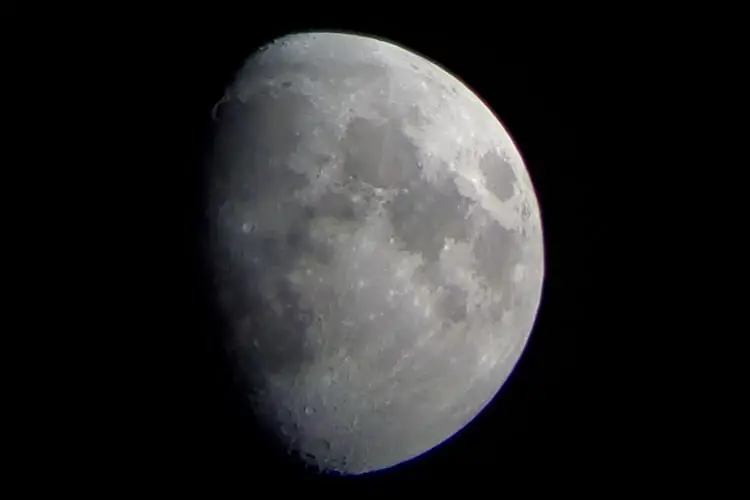
Taking images of the Moon with the smartphone adapter was very difficult, for two reasons. Firstly, it’s much harder to align the smartphone camera with the eyepiece in the dark. Secondly, you need to make sure the Moon is properly in the center of the eyepiece field of view; if it’s to the left or right of center, your smartphone camera will have difficulty getting it in shot.
After about ten or fifteen minutes of trying with the supplied adapter, the 20mm eyepiece, a Celestron Neutral Density Moon Filter and a Samsung Galaxy S10+, I admitted defeat. I swapped the eyepiece out for my own Orion Stratus Wide-Field eyepiece and took the images above by holding the smartphone up to the eyepiece. (I had to adjust the ISO and shutter speed to avoid over-exposing the image.)
Target Audience

The Celestron Travel Scope 80 has been designed to be the best of both worlds and caters to both outdoor enthusiasts and amateur astronomers alike. For the most part, it succeeds, as campers and hikers will find the backpack light enough to be taken almost anywhere, while children and adults alike can easily use the telescope for either astronomy or terrestrial viewing.
Even if you don’t travel much, this is still an ideal scope to use from the comfort of your backyard, whether you’re interested in what you can see in the skies above or on the land below.
Specifications
- Type: Refractor
- Mount Type: Alt-Azimuth
- Base: Tripod
- Computerized or Manual: Manual
- Aperture: 80mm (3.1”)
- Focal Length: 400mm (15.7”)
- Focal Ratio: f/5
- Eyepiece 1: 20mm (20x)
- Eyepiece 2: 10mm (40x)
- Finderscope: 5×24
- Highest Useful Magnification: 189x
- Lowest Useful Magnification: 11x
- Limiting Stellar Magnitude: 12
- Resolution (Dawes): 1.5 arc-seconds
- Optical Tube: Aluminum
- Optical Tube Length: 457mm (18”)
- Optical Tube Weight: 2.4 pounds (1.1 kg)
- Tripod: Aluminum
- Tripod Height (incl. mount): 559mm to 1321mm (22” to 52”)
- Tripod Weight: 1.8 pounds (0.8 kg)
- Total Weight (Assembled): 4.2 pounds (1.9 kg)
- Total Weight (in Backpack): 5.3 pounds (2.4 kg)
- Warranty: Two Year Limited Warranty
What We Liked
- Very lightweight and portable
- Quickly and easily assembled
- Good optics for the price
- Generally very easy to use
- Good for kids
What We Didn’t Like
- Finder isn’t good for astronomy
- Backpack doesn’t adequately hold contents in place
- Smartphone adapter is difficult to use
- Tripod is a little shaky and easily tipped over
- Mounting plate easily drops off the central column
Final Verdict
The Travel Scope 80 is perfectly fine for the purpose it was designed for; a quality, lightweight and portable telescope that can be taken and used almost anywhere. It’s great for terrestrial views, but while the optics are more than up to astronomical tasks, the tripod and, in particular, the finder, leave something to be desired.
By upgrading the finder and keeping realistic expectations of the scope’s capabilities, there’s no reason why you couldn’t easily use the scope for both terrestrial and astronomical observing. It may not be capable of showing everything in stunning detail, but you can still reasonably expect to get a good view of potentially hundreds of night sky sights.
Recommended Accessories
- Celestron 1.25″ Moon Filter – pretty much an essential accessory, this filter reduces the glare of the Moon and allows you to observe it without being dazzled. It’s also “neutral density,” meaning that it produces a natural color view of the Moon.
- Celestron PowerTank Glow 5000 – a red flashlight is also essential if you’re using star charts and books as it will protect your night vision. The PowerTank has three brightness levels and a USB port to charge your smartphone or tablet.
- Celestron Omni 2x Barlow Lens – a 2x Barlow will double the magnification of any eyepiece you attach to it. It’ll provide magnifications of 40x and 80x if used with the Travel Scope 80 and the eyepieces supplied with it.
- Celestron 8mm to 24mm Zoom Eyepiece – avoid having to carry a range of eyepieces with you by using a zoom eyepiece. This eyepiece provides a magnification range of between 16x and 50x when used with the Travel Scope 80.
- Celestron Lens Cleaning Kit – dust can get everywhere and it’s important to keep the optics of your telescope and eyepieces clean. This kit has everything you need to ensure you get the best views possible.
If you’re looking for additional resources on stargazing, we have a number of articles that you might find interesting.
First off, we’ve created guides on a variety of astronomy related topics, such as our guide to determining the proper telescope cost , our guide to using a telescope for beginners , our astronomy guide for beginners , and our guide on the types of telescopes a beginner should buy . We’ve also created a series of helpful guides, such as our list of fun facts about astronomy (which any kids or beginners will no doubt find interesting), and our breakdown of kids stargazing guide .
We’ve also created a series of buying guides, including our overview of the best astronomy tools , our guide to evaluating the best telescopes for beginners , and our guide to the best binoculars for astronomy .
In addition to those guides, we’ve also created a series of in-depth reviews of a variety of telescopes and astronomy binoculars. You can check them out before you buy to find out the best accessories, pros and cons for different models, and even to see what they look like unboxed. If you’re considering buying a telescope we have a series of reviews that also serve as how to guides. You can get our series of guides to individual telescopes as well, including our review of the following telescopes and binoculars: Celestron SkyMaster DX 8x56mm review or our first-hand look at the Skymaster 15×70 , Celestron Firstscope , SkyGenius 10×50 Binoculars , Opticron Adventurer II 10×50 Binoculars , Orion Astronomy 15×70 Binoculars , Orion XT6 Dobsonian Telescopes , Orion Scenix 7×50 Binoculars , Celestron ExploraScope 114AZ Telescopes , Zhumell Z100 Telescopes , Sky-Watcher Heritage 130 Telescopes , and the Celestron SkyMaster 20×80 Binoculars to really be able to dive into the different telescope and astronomy binocular models.
45 Portland Rd Ste 7 - 1006 Kennebunk, ME 04043-6660 United States
Find Us on Social:
Moon and back.
All Reviews : 1

Celestron 80mm Travel Scope (With Backpack) 2024 Review
Introduction.
The Celestron Travel Scope in 80mm (link opens new a tab) is one of many affordable telescopes on the market aimed at active families who want to enjoy the brighter views the night sky has to offer when on vacation or a weekend camping trip.
Let’s see what makes this Celestron scope a solid choice for not only budget-conscious shoppers but for outdoor enthusiasts, families, and novices alike.

Things to Consider Before Buying
This scope from Celestron is an excellent entry-level telescope, and it’s powerful, versatile, and portable enough that even more advanced users will be able to enjoy it. But don’t expect to zoom in on the tracks of the Mars Rover.
This is a simple telescope with an easy setup, an affordable price tag (below $120 – check today’s price) , and convenient portability via the included backpack. Beginners will enjoy using this scope to see the Moon in bright detail, and it can happily be used to practice your planet -finding skills as well.
All in all, this scope is well-suited for someone starting as a novice astronomer with no immediate plans to go beyond the brightest and most rewarding night sky objects. It also makes a wonderful starter telescope for children !
There is no getting away from its small aperture. 80mm (three inches) is too small to gather lots of light, which is what we need to see faint, distant objects.
It also has a short focal length of 400 mm, which is great for ease of travel, but results in low magnification levels. Again, this is fine if you’re happy to content yourself with fun evenings outside the tent helping your kids see planets and star clusters but you’ll be disappointed if you have ambitions to see fainter galaxies and nebulae.
The main selling point of this telescope is convenience! Consider how this extremely lightweight scope could be a centerpiece of a night spent on a beach, after a hiking trip up a mountain, or during a vacation to a quiet suburban lake house with little light pollution .
That sort of portability makes this an ideal model for outdoor enthusiasts who want to get their eyes (and maybe those of their kids) off of their smartphones and onto the breathtaking night sky.
This scope is right for you if you are looking to track the phases of the Moon with your child, or you want to hike up a hill during the day and then look at Jupiter’s rings after nightfall.
If you are hoping to make astronomy a more serious hobby, then there are many better models for that. These are some of our favorite telescopes .
Features and Benefits of the Celestron Travel Scope 80mm
Whether you’re evaluating a telescope that costs $5,000 or this travel scope at under $120, you should assess it based upon the features it offers and the benefits it provides. Here are the areas we’ll consider in the rest of this review:
Optical Performance
- Mount Performance
Included Equipment
- Setup & Use
- What You Can See
Astrophotography
Standard magnification table.
The table below shows the magnification levels you’ll achieve with this scope using a 25mm, 18mm, and 10mm eyepiece. The bottom row shows what this would be with a 2x Barlow Lens .
This scope offers reasonable optical performance for an entry-level model.
As you can see from the table, the magnifications you can achieve are low, which is fine because the small aperture doesn’t gather enough light to make practical use of more power.
Similarly, a low magnification equates to a larger field of view . You’ll enjoy looking at wide star fields, especially taking in most of the Pleiades and other clusters, such as The Great Hercules Cluster and Wild Duck Cluster .
There are two average eyepieces included in the package, one has a focal length of 20mm, the other is a 10mm eyepiece. Respectively, these deliver magnifications of 20x and 40x, which is fine for spying craters on the Moon or the waning disc of Venus .
If this telescope model has a drawback, it is the quality of the mount.
Even after setting it up carefully, there seems to be quite a lot of play in the mount. The plastic construction means that finding the right holding tension is very difficult.
That means that even after aiming using the finderscope and then tightening the knobs to lock in the view, you will have to keep making adjustments to get things just right.
Sadly, those of us shopping at the cheaper end of the range have to accept that manufacturers offer bigger telescopes for less money by shipping them with cheap mounts. Thankfully, there are free and easy ways to add stability . (link opens a new tab).
The big win of the tripod’s design is its lightweight and portable construction. Made out of aluminum, it’s light enough to carry and move about quite easily.
This model’s ease of transport is compounded with the inclusion of a backpack. The whole setup is painless to move by hand or vehicle, which is one of its strongest features.
We’ve already mentioned practically everything you get for your $120, and we didn’t expect much more than the telescope, mount and a couple of eyepieces at this price.
However, it also comes with a 5×24 finderscope, which is fine for what it needs to do. The ‘5’ means it gives 5x magnification, which is ideal for hunting down objects to view once it’s properly aligned .

Also included with the telescope and backpack are a smartphone adaptor for very basic photography – probably just the Moon in reality, and an erect image diagonal (makes the view in the eyepiece upright instead of inverted).
Finally, there’s a copy of the Basic edition of Starry Nights astronomy software and the SkyPortal app, both of which are useful for planning what bright objects to look at and where to find them.
Setup and General Usage
This telescope and its tripod are easily set up in just a few minutes, even when you first open the box. Quickly adjust the telescoping tripod legs for various users of different heights or for viewing from a table or other raised structure.
Everything is pre-assembled for highly rapid deployment. It’s a refractor so no need for collimation, and the built-in accessory tray on the tripod is quite handy for keeping track of the extra eyepiece.
The total weight of this scope and its tripod and mount is less than five pounds. That means it is almost effortless to scoop it up and move it around. And, when broken down and stored in the included backpack, you’ll barely notice the weight even on a long hike.
What Can You See
As we’ve already touched upon, this is a telescope designed for the brightest and most accessible night sky objects.
Celestron’s 80mm travel scope offers reasonably detailed views of the Moon’s larger features, and you’ll see the crescent of Venus and Mercury, the moons and bands of Jupiter, and the rings of Saturn with it. When Mars is close enough (which happens every two years) you’ll also see its more obvious surface features .
In terms of deep sky objects (DSOs), you’ll be mainly limited to stars. So think about using it to split doubles or paint beautiful pictures of clusters. You’ll only be able to pick out the very brightest nebulae and galaxies, such as the Orion Nebula and the Andromeda Galaxy .
Beyond that, this model is not suitable for peering deep into space . Looking for faint galaxies and gas clouds is not on its agenda.
This model is not suitable for astrophotography because it lacks a motor for tracking the motion of celestial bodies and its mount is not strong enough to support a camera (other than a small smartphone).
User's Viewpoint
The thoughts of actual users are sometimes even better than a features guide. Let’s see what Celestron Travel Scope users are saying about the 80mm backpack model.
Within the limitations of the scope, it performed adequately to excellently. It works well for the Moon and early morning Venus, and Jupiter and Saturn. Now obviously, the image is not going to be as large…as it would be through my larger 11″ SCT/Celestron, but it’s easier to transport too, over the 200lbs 11-inch.
Anonymous, verified buyer
Got this for my 10-year-old son. So he’d have a scope light enough for him to bring outside and set up on his own and cheap enough that it’s not a huge loss if it gets messed up…I have plenty of large scopes that take a lot of time to set up. This is perfect for setting up and taking down quickly and easily.
Island Girl
It was easy to assemble, and I was able to see the full moon with decent detail. However, the features that make it a handy travel scope are also the downfalls. It is very light with lots of plastic parts. When you tighten the screws to lock it in place, the scope sags ever so slightly, and your subject is no longer centered in the field of view (if it appears at all). Also, the lightness of the device made me very afraid that it would fall over easily if bumped.
Final Verdict
If you’re looking for a fun, easy-to-use, and portable telescope, the 80mm Celestron Travel Scope is likely to be a perfect fit, especially since it’s practically impossible to bring a massive, expensive scope to the beach, on a hike, or to a vacation destination.
This model is ideal for that sort of application!
It is limited by its size lightweight components when it comes to deep space but this isn’t a scope for a professional astronomer!
Instead, it’s quick to set up, easy to transport, and great fun to use for curious adults and children alike. At this price point, you really can’t go wrong!
Click below for today’s price, or to buy Celestron’s 80mm Travel Scope with included backpack.
Astronomy Equipment Reviews
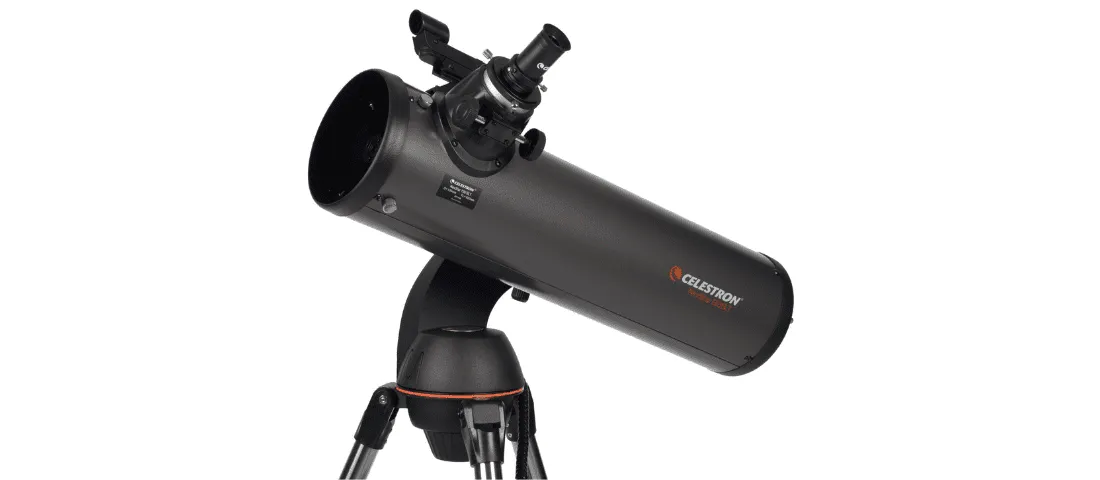
Celestron NexStar 130SLT Review – 2024 Update
Celestron’s NexStar 130 SLT Computerized Telescope is a powerhouse for novice astronomers. Although,…
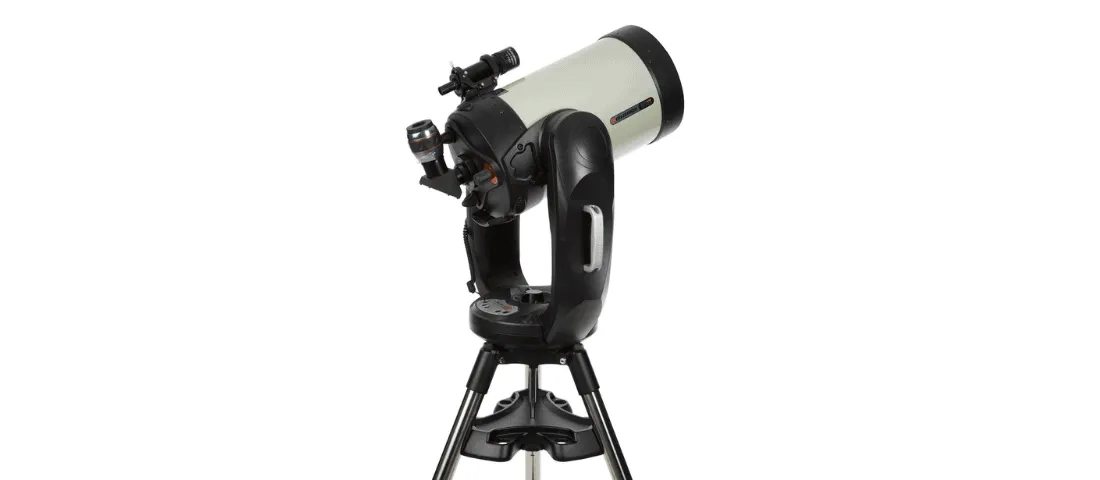
Celestron CPC Deluxe 1100 HD Telescope Review
The Celestron CPC Deluxe 1100HD, provides incredible optical quality whether viewing planets, DSOs,…
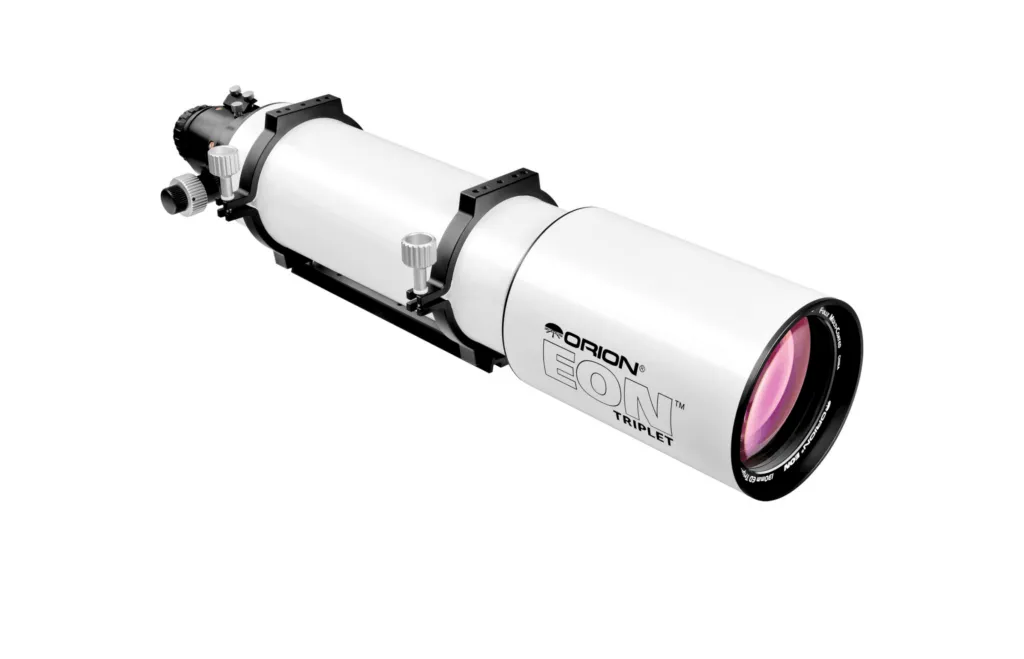
Orion EON 130mm ED Triplet APO Telescope Review for 2024
Overview Anyone who is familiar with APO triplets like this one is aware…
Enjoying Love the night sky? Join 13,500+ Backyard Astronomers for Exclusive StarGazing Content
Our subscribers receive a detailed weekly guide to the moon and planets, as well as exclusive astronomy content that doesn’t appear on the website.
Press the button below to sign up - don’t miss another week!

Celestron Travel Scope 80mm Review
Finding a telescope that is reliable, affordable, and light can be a challenge. There are too many options in this entry-level category with lots of different prices and specifications, but the truth is most of them leave a lot to be desired.
On top of that, if you are new to the stargazing hobby, it can be hard to tell how to choose your first telescope when you see all the technical specifications and numbers that are used to advertise an optical device.
Among all these telescopes you might have run into the Celestron Travel Scope 80mm, one of the most popular entry-level devices. But is it good? is it worth the money?
I have personally tested it extensively and I have all the answers for you. I compared it with other comparable telescopes in both price and specs to make it a fair competition.
If you just want the answers, here’s a quick verdict. For the in-depth review, keep reading below.
The verdict

The Celestron Travel Scope 80mm is a solid portable telescope. It offers good value at a very budget-friendly price. That being said, it does have the limitations that come from having a small aperture and short focal length.
These are the use cases where I’d recommend this telescope. I think it is an excellent choice for any of these:
- For main use in the field (stargazing while camping, hiking, bird-watching)
- As a secondary portable telescope,
- As a first-time telescope for kids
Now, if you want to use it as your main backyard scope as an adult, it’s still a decent pick for a beginner as long as you understand that it is very much in the “entry-level” range in terms of power and is not going to show any impressive views. If you are an adult looking for your first telescope, this might be a bit too limited in power and capabilities. Check out this post on the best telescopes for adults for some alternatives.
The optics quality is good as you can expect from Celestron which is one of the most reliable brands on the market. I found some color errors but those are to be expected out of any refracting telescope.
The Celestron Travel Scope 80 accomplishes its goal of being a solid portable device. The whole thing along with the tripod, mount, and accessories fits into the included backpack and doesn’t take up much space.
The tripod is a bit of a problem. It is sturdy on flat surfaces. However, on the field, where the ground might not be as reliable, it can feel unstable.
Overall, the Celestron Travel Scope 80mm is a good buy. We named its smaller 70mm brother the best budget pick in our article about budget telescopes and this is just as good while offering extra power.
(out of 10)
Technical specifications and what they mean
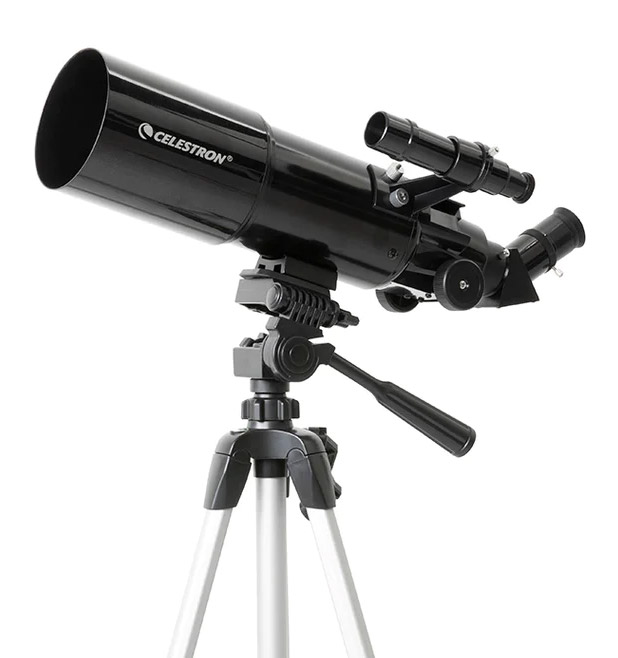
Aperture – Diameter of the main lens.
Focal length – Distance traveled by the light from the main lens to the exit point.
Focal ratio – Focal length / aperture. Or how “fast” the telescope is.
Maximum magnification – The limit at which the telescope won’t reflect any more detail. Magnification is determined by the focal length and the eyepiece being used at any given time. Here’s a calculator for it .
Limiting magnitude – Maximum “brightness” of the objects (stars, galaxies, etc) it can reach. Less magnitude = brighter objects.
Full review
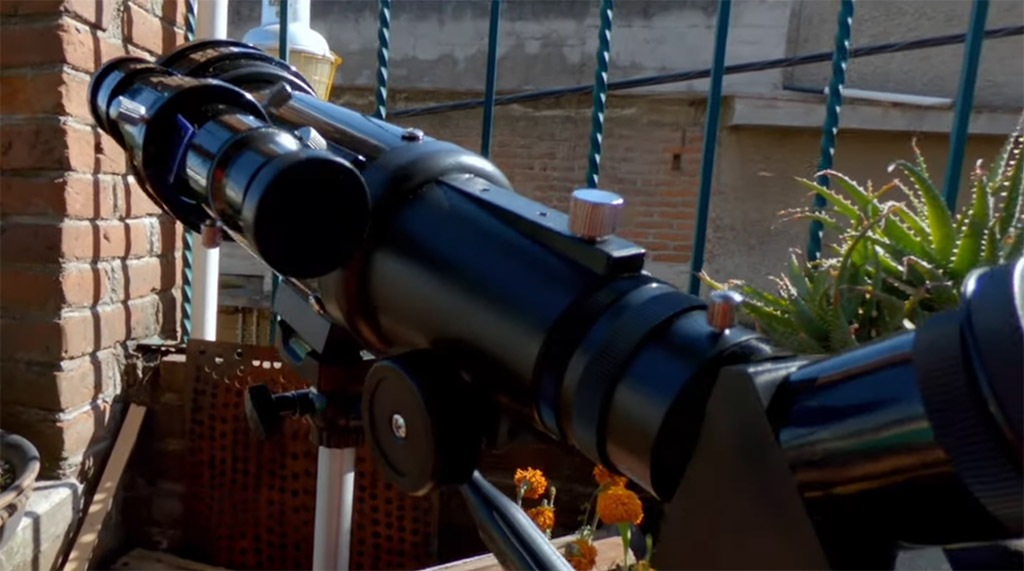
Portability
The main feature of the Travel Scope 80 is, of course, its portability. It weighs less than 4.5 lbs (2 kg) fully assembled which not only makes it great as a camping telescope, but also for hiking, and bird watching.
This lightness also means it can be easily handled and assembled by kids without requiring assistance, but adult supervision during the setup is still recommended.
The included backpack isn’t as good as the telescope, though. The materials don’t feel great and although I didn’t use it for a long time, it doesn’t seem very durable.
The Celestron Travel Scope 80mm is a refracting telescope. I’ll spare you the details of what that means, but all you need to know is that it resolves images with good brightness and sharpness at the expense of having some minor color errors and effects like halos around certain objects. This happens to all refractors, but how noticeable they are depends on the quality of the lenses. The Travel Scope performs very well in that regard. The lenses are very high-quality as you can expect from Celestron.
Magnification and reach
With an 80mm telescope, you can expect to see all of the planets in the Solar system with good sky conditions.
The Moon will look great, you should be able to see all of the major craters and geological features.
You will be able to get some detail out of Mars, Venus, and Jupiter. Saturn’s rings will be visible but might not appear to be separate from the rest of the planet. Uranus and Neptune are very far away and they are hard to see in detail even with a professional telescope so you’ll only see a couple of blue dots. Check the photos on this post so you can get an idea of what you can expect to see.
Dozens of the brightest nebulae and galaxies will also be visible, including the most prominent ones like Andromeda or the Sombrero galaxy .
Build quality
This is the column where the Celestron Travel Scopes don’t shine too much. While the build quality is reasonable, you can tell they cut a few corners here and there.
Pretty much all of the threads and connections are made of plastic. They are well-built and I had no issue with any of them, but I’m not sure how they’ll stand the test of time after months or years of constant use.
My other concern is with the mount and the tripod. It felt a little shaky when using it on a surface that wasn’t perfectly flat. I don’t think it is a deal breaker and to be honest this is a problem with most telescopes in the same price range.
Accessories
The Travel Scope comes with two standard Kellner eyepieces (20mm and 10mm), its finderscope, and a smartphone adapter so you can take photos.
The eyepieces are basic but serviceable. I don’t think I would recommend upgrading them at the start. If you have the extra budget, getting a telescope with a larger aperture will do more for the quality of the image than changing the eyepieces. If you really want some more options in terms of magnification, consider a zoom eyepiece like the SVBONY SV153 .
The smartphone adapter is a nice addition. Taking photos with your phone is going to help you learn a lot more and might pique your interest to do some more serious astrophotography in the future.
The cost is one of the best features of the Celestron Travel Scope 80. It is extremely affordable and one of the better-performing devices in its price range.
The price jump from the 70mm version to the 80mm is worth it for the extra bit of power you get, but the 70mm is also a decent choice if you are on a very tight budget. What I wouldn’t recommend is going below that to the 60mm or 50mm versions. Those are way too small for stargazing and their only real-world use is for bird watching.
The Celestron Travel Scope 80 is a great travel telescope. It performs well under clear skies and on the field. I’d definitely recommend it for that purpose or as a kid’s first telescope.
But you do need to understand that this is an entry-level device and adjust your expectations accordingly. It’s not going to get you ultra-detailed views of the planets and as a backyard telescope, it has limitations.
But in its category (budget portable telescopes), it is one of the best performers and it offers great value.
Alternatives
If you want some alternatives, check out our post on travel telescopes , budget telescopes , and kids telescopes .
Elena is a Canadian journalist and researcher. She has been looking at the sky for years and hopes to introduce more people to the wonderful hobby that is astronomy.
Related Posts

6 Best Tabletop Telescopes For Watching Planets and Galaxies

Telescope Specs Explained By An Expert

Alt-azimuth vs Equatorial Telescope Mounts. Which One is Better?

Celestron StarSense Explorer DX 102AZ Review
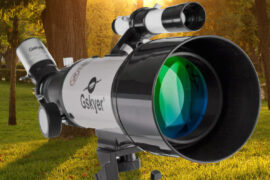
GSkyer AZ70400 (70mm x 400mm telescope) review

Types of Telescope Mounts Explained
- Buying Guides
- Telescope Accessories
- Magnification Calculator
- Field of View Calculator
- Constellations
- Solar System
- Space Exploration
Type above and press Enter to search. Press Esc to cancel.
Love Astronomy and Saving Money?
Sign up to receive sale alerts, news about upcoming celestial events, and telescope tips from our experts!
Please let us know what topics you are interested in.
Text CELESTRON to 833-948-6837 to sign up for observing alerts and offers via text!
Recieved A Free Gift!
Subtotal ( Items) $0.00
Have a promo code? Enter it during checkout!
Orders of $50 or more are eligible for free ground shipping! Contiguous USA only. Product exceptions apply.
- Orders ship from Torrance, California.
- Orders placed after 12:00 PM Pacific Time or over the weekend will be shipped within 1-2 business days.

Check these out
- Top Accessories
- Popular Science by Celestron
- Advanced VX
- AstroMaster
- AstroMaster LT
- CPC Deluxe HD
- ExploraScope
- National Park Foundation
- NexStar Evolution
- NexStar SLT
- PowerSeeker
- StarSense Explorer
- Travel Scope

The most popular accessories for your new telescope!
Buyer's Guide!

Start here to find the perfect telescope for you!

Optical Tubes
- Mounts & Tripods
- Astronomy Binoculars
- Solar Observing
- Cameras & Imaging Accessories
- Dew Prevention
Accessories

Sport Optics
- Top Spotting Scopes
- Top Electronics
- Spotting Scopes
- Outdoor Electronics
- Sport Optics Accessories
NEW: Nature DX ED Binoculars

Celestron’s award-winning Nature DX binocular gets a major upgrade with the addition of ED objective lenses.
NEW: Elements ThermoTank 3

On the trail, at the job site, in the classroom, or simply sitting at home relaxing – the Celestron Elements ThermoTank 3 will keep your hands toasty.
NEW: Elements ThermoTorch 5

This rugged, 3-in-1 device features a true tactical 3-mode flashlight, a hand warmer, and a portable power bank for recharging your personal electronics on the go.

Microscopes
- Top Microscopes
Digital Microscopes
- Biological Microscopes
- Compound Microscopes
Stereo Microscopes
- Celestron Labs
- Microscope Accessories

Observing the microscopic world has never been easier!

Perfect for the serious student, professional scientist and discriminating hobbyist
Kids Microscope Kit

Great for home, classroom, or home-school use, this kit includes all the essential items you’ll need to begin exploring the wonders of the microscopic world.

- Redefining Technology
- News & Guides
Team Celestron
- Public Relations
- Executive Bios

Our Technology

- Technical Support
- How-To Videos
- Manuals & Software
- Knowledge Base & FAQ
- Product Registration
- Spare Parts
- Warranty Information
- Do not sell my personal information
CPWI Software

Take control of your telescope! Download the Celestron PWI Telescope Control Software
SkyPortal App

Celestron’s FREE planetarium app is an astronomy suite that redefines how you experience the night sky.
Using Telescope Eyepieces

Your eyepieces are the first accessories you should learn to use with your telescope. Read our guide!

Tools for Beginners
For Astronomers

For Birders

Travel Scope 80 Portable Telescope with Smartphone Adapter
£139.99
Style: Travel Scope 50 Portable Telescope National Park Foundation Travel Scope 60 Telescope Travel Scope 70 Portable Telescope Travel Scope 80 Portable Telescope with Smartphone Adapter Travel Scope 70 DX Portable Telescope with Smartphone Adapter Travel Scope 60 DX Portable Telescope with Smartphone Adapter Popular Science by Celestron Travel Scope 70 Portable Telescope with Smartphone Adapter and Bluetooth Remote
- 80mm refractor telescope with fully coated glass optics and a lightweight frame.
- Custom backpack included to store your telescope and accessories comfortably.
- Observe in no time with a quick and easy, no-tool setup.
- Accessories include: two eyepieces (20mm and 10mm), erect image star diagonal, finderscope, and a smartphone adapter.
- Pan handle Alt-Az control with clutch for smooth and accurate pointing.
- Adjustable height tripod.
OVER 60 YEARS OF INNOVATIVE TECHNOLOGY
In the 1960s, Celestron’s founder, Tom Johnson, created groundbreaking new telescopes never before seen on the consumer market. Today, our world-class team of optical and electronic engineers continues to push the boundaries of technology. From the SkyProdigy, a telescope so smart it can align itself, to our high-performance EdgeHD optical system, we’ve revolutionized the hobby of astronomy for beginners and advanced amateurs alike. Go behind the scenes with Celestron’s product development team and learn more about our award-winning and patented innovations.

At the forefront of a new era in amateur astronomy, the launch of Celestron Origin stands as a beacon, seamlessly intertwining stargazing and astrophotography into a singular, user-friendly experience. This intelligent, all-in-one observatory and astroimaging system emerges as a catalyst, eliminating the complexities traditionally associated with telescopes and, in turn, metamorphosing your backyard into an inviting gateway to the Universe.

Celestron released the patented Rowe-Ackermann Schmidt Astrograph (RASA) 11” optical tube in 2014. Unlike traditional telescopes, the RASA design ingeniously places the imaging sensor at the front of the telescope tube, creating an ultra-fast f/2.2 system with an extraordinarily wide field of view.
Sky recognition technology that has revolutionized the manual telescope by eliminating the confusion common among beginners and enhancing the user experience for even seasoned telescope users.

U nleash the full pointing accuracy of your Celestron computerized telescope with a specialized telescope control software suite. control and Sky Viewer display makes selecting your target easy. CPWI has an extensive object database, employs PointXP mount modeling, and more.
The new Lithium Phosphate (LiFePO4) battery chemistry has significant advantages over other battery chemistries, great for for those Astronomers on the go.
WiFi technology encircles the globe in a web of connectivity, knowledge, and information. Now, Celestron is using that same technology to allow star gazers to connect to the night sky and enhance their experience of the cosmos in fun and unique ways.

Planetarium software package which provides easy-to-understand explanations and impressive visuals of all kinds. Learn more about extra solar planets imagery, 3D Star rendering, observation planning, telescope control, multiple-panel printing, and much more.

Celestron’s aplanatic EdgeHD optics revolutionized astroimaging. This award-winning optical system reduces visual defects like field curvature and coma, creating an ultra-flat field for pinpoint stars all the way to the edge of today’s largest imaging sensors.

Fastar Technology allows imagers the option of drastically increasing the speed and sensitivity of their Celestron optical tube, allowing bright, detailed images with short exposures.

Our patented SkyAlign alignment technology makes setting up a computerized telescope simple, fast, and accurate. Just point the telescope at any three bright objects—stars, bright planets, or even the Moon—and your telescope can orient itself with the night sky.

Celestron’s patented StarSense® Technology makes it easier than ever to locate objects in the night sky, even if you’ve never used a telescope before. Turn it on and push ‘Align.’ In about three minutes, you’re ready to observe!

Get ready for a night of astroimaging with your mount faster than previously thought possible with All-Star Polar Alignment. This innovative software solves the time-consuming problem of trying to pinpoint the North Celestial Pole.

One of the most important factors in a telescope is its transmission—the percentage of light that reaches the focal plane. Our proprietary StarBright XLT optical coatings dramatically increase transmission, up to 97.4% on our Schmidt corrector lenses.

ED stands for "extra-low dispersion," which refers to the composition and optical properties of the glass used for the lenses. ED glass is specially formulated and contains rare-earth compounds that greatly reduce a visual defect called chromatic aberration.

This telescope control software replaces the hand control and allows the user to remotely control their Celestron computerized telescope from their personal PC or laptop.

EclipSmart solar products feature Solar Safe filter technology providing the ultimate protection from harmful solar radiation, including both IR and UV light, and filters 99.999% of visible light. Celestron Solar Safe filter technology is GUARANTEED SAFE for direct solar observation and has been independently tested by SAI Global Assurance Services.
Includes These Celestron Technologies
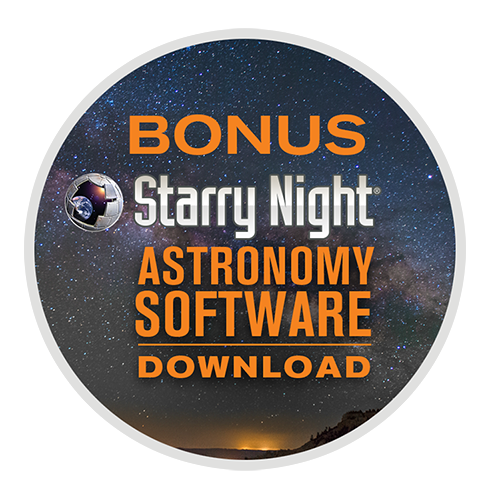
Customers Also Purchased
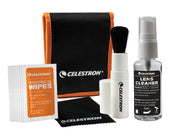
Description
Specifications
Support & Downloads
The Travel Scope 80 is a refractor telescope perfect for terrestrial and celestial viewing on the go. The Travel Scope can view the planets, moon, star clusters and brighter deep sky objects like the Orion Nebula and Andromeda Galaxy at night. The erect image star diagonal makes the optical tube ideal for using as a spotting scope during the day.
Setting up the telescope is a breeze, so you can begin observing in no time. Even on your first time out, you can assemble the telescope and its accessories in just a few minutes. The adjustable tripod legs allow you to customize the telescope’s height or place it on raised surfaces like a picnic table.
The total telescope kit weighs in at just 4.5 pounds—perfect for impromptu observing sessions or transporting wherever life’s adventures take you.
Manual Alt-Azimuth telescope
Navigate the sky with a pan handle Alt-Az control with clutch for smooth and accurate pointing. Move the clutch in an up/down, left/right fashion to track your object in the eyepiece.
Accessories Included
The Travel Scope 80 comes with two eyepieces (20mm and 10mm), erect image diagonal, finderscope, a smartphone adapter, and a travel backpack. The two eyepieces offer different magnifications to view your intended object. The erect image diagonal allows for right-side-up viewing ideal for terrestrial subjects but can also be used for celestial objects. The permanently mounted finderscope will help you quickly center an object in your eyepiece for easier observing.
Smartphone Adapter – Image celestial or terrestrial objects with this smartphone adapter. With its light, rigid frame, this accessory allows you to connect any smartphone to any telescope eyepiece with an outside diameter of 45mm or smaller. The additional magnification provided by the eyepiece allows your phone to capture great images of the Moon and planets. This smartphone adapter installs easily by clamping over the top of an eyepiece. The smartphone is held in position with the help of tightening knobs that securely lock your phone in place. Some large and/or bulky phone cases (including folio style cases) may need to be removed for the phone to fit in the adapter.
Travel Backpack – A custom backpack comes with your telescope for you to store your optical tube, tripod, eyepieces and accessories comfortably.
Starry Night Software
Download Celestron’s Starry Night Software and learn about the night sky, celestial objects, and how to plan your next observing session. Celestron Starry Night Software is the premier astronomy software package on the market, providing resources and knowledge to view our solar system and beyond.

£69.99
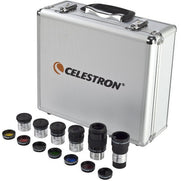
£249.99
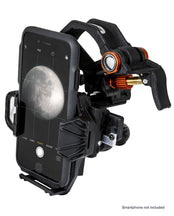
£64.99

£34.99

£16.99
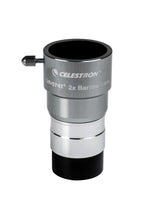
£74.99
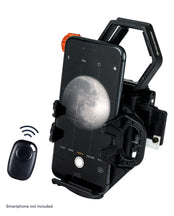
£39.99
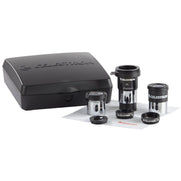
£89.99
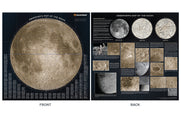
£399.99

£19.99
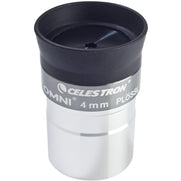
£54.99
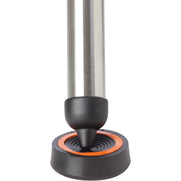
£79.99
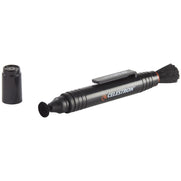
£14.99
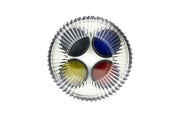
£44.99
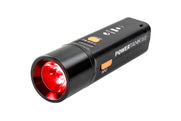
£24.99
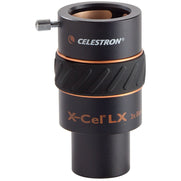
£109.99
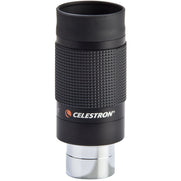
£12.99
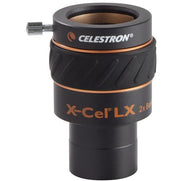
£129.99
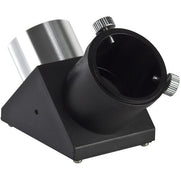
£49.99
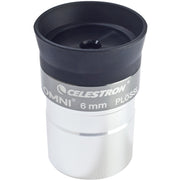
£119.99
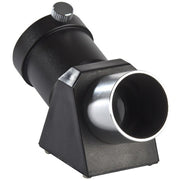
£289.99
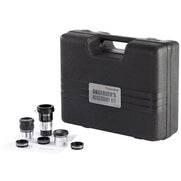
£164.99
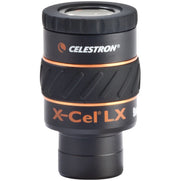
£179.99
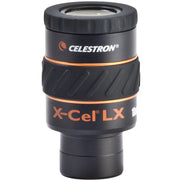
£149.99
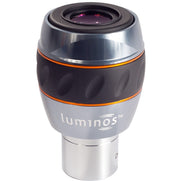
Browse the Series
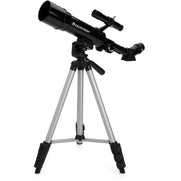
Popular Science by Celestron Travel Scope 70 Portable Telescope with Smartphone Adapter and Bluetooth Remote
There are currently no customer reviews.
Featured Dealers

Online Retailers

Telescope Compatibility
Focus Motor Compatibility

Celestron Travel Scope Review
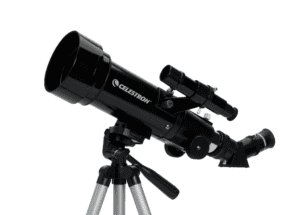
The Celestron 21035/21038 Travel Scope is another great astronomy and terrestrial telescope from Celestron that has portability and ease of use as the main features. It’s a compact refractor telescope that is available in two models, the 50mm (the 21038 model ) and the 70mm (the 21035 model ). Although there is a price difference between the two models, with the 50mm one being obviously slightly cheaper, we’ve come to the conclusion that the 70mm model is well worth the additional dollars in the price and as the images are much clearer and better overall. In the text that follows we’ll be focusing on the 21035 model. Worth noting that part of this Travel Scope Series are also the following telescopes: the newer DX models Travel Scope 60DX and Travel Scope 70DX and the other popular one the Travel Scope 80. You’ll find a comparison table below.
A.I. Scanned Best Price

Celestron Travel Scope 70 Review Card
- Manufacturer - 9.9/10 9.9/10
- Optics - 9/10 9/10
- Value - 9.5/10 9.5/10
- Portability - 10/10 10/10
- Mount - 9.2/10 9.2/10
This telescope has been a bestseller for Celestron for years now. When talking about a telescope just under the $100 mark it’s easy to understand why it’s a market favorite given the included backpack and smartphone adapter as well as a sturdy enough tripod.
- Crisp images of the moon and planets. Jupiter’s ring and moons are visible.
- Backpack included
- Lightweight which makes it one of the most portable telescopes on the market
- Smartphone adapter for digiscoping inluded
- Versatile with terrestrial viewing capabilities
- Not overly powerful for deep sky objects viewing
Comparison Table for all Travel Scope Models

What’s in the box
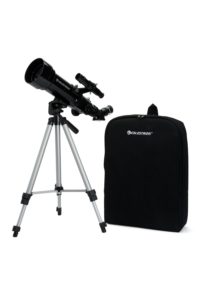
- Optical tube
- Mount and tripod (preassembled)
- 20mm and 10mm eyepiece
- 45° erect image diagonal
- 5×24 finderscope
- SkyPortal app
- Celestron’s Starry Night Basic Edition Software
- Backpack to store scope and accessories
The Celestron travel scope comes with a backpack for both it’s models the 50mm and the 70mm one. The backpack is padded and as it’s custom created for this telescope , all the components and accessories along with the tripod and the telescope it’s self fit perfectly.
As we’ve mentioned besides the backpack case the set also includes a full size aluminium photographic tripod which turned out to be very stable (considering the light weight nature of the tripod and telescope which would make it a difficult for the tripod to be as reliable as with other telescopes) and especially useful for taking amazing photos. The other accessories consist of the two eye pieces ( 20mm one for a 20x magnification and a 10mm one for a 40x maginification) and a 45 degree correct image prism . And last but not least, Celestron includes a copy of The Sky X software which was contains a database of over 10,000 objects and printable sky maps (which can be very helpful if your new to astronomy).
Mount & Tripod
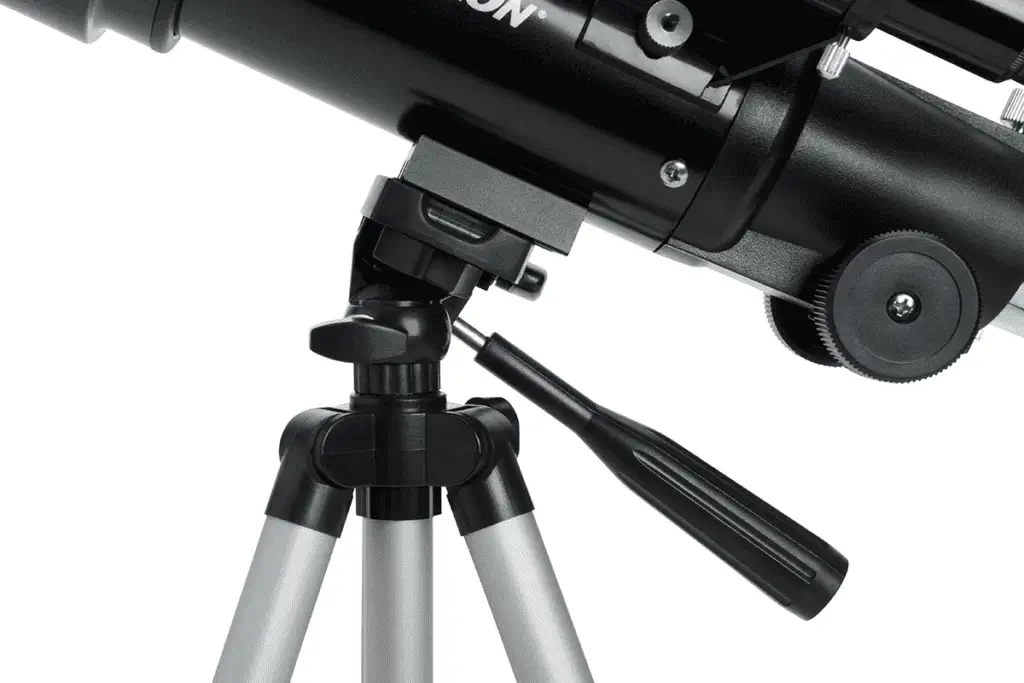
The mount for this telescope and in fact for the entire Travel Scope series is the manual alt azimuth mount type. It’s easy to handle and works ok on the tripod. And speaking of the tripod with it’s help you can adjust the height of the telescope anywhere from 22″ to about 46″ .
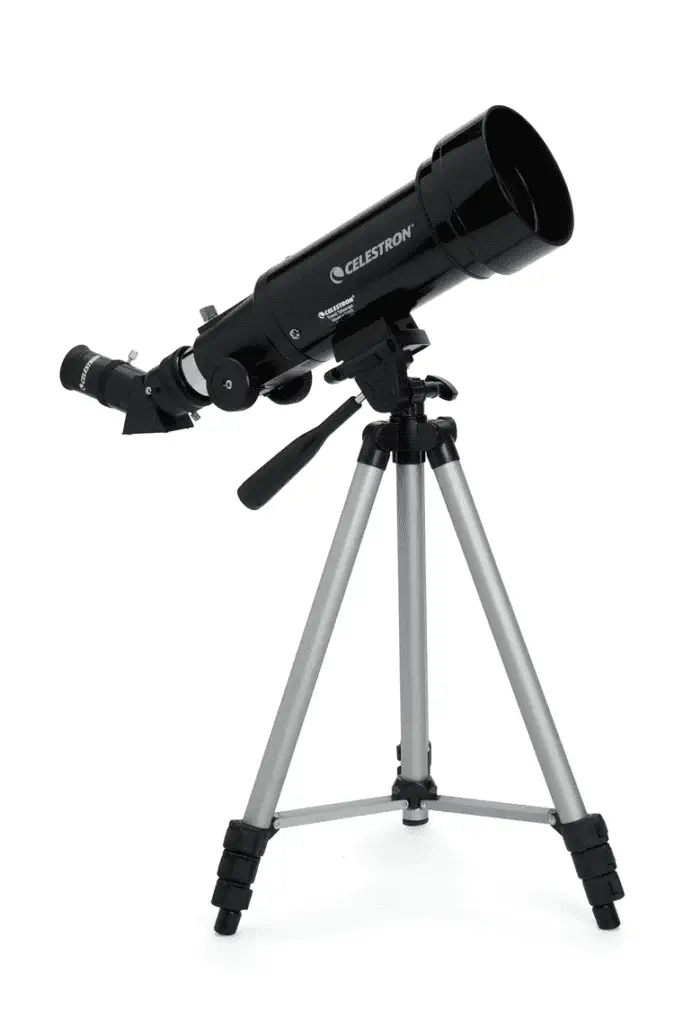
Correct Image Prism
One additional accessory which I’m happy Celestron included in the package is the erect image prism.
When you look through a refractor telescope without such a prism you see the image upside down. Now, when viewing celestial objects it’s not such a big deal with a few exceptions but when viewing terrestrial objects it becomes a problem. So by having this accessory, this telescope is ready to be used on your next trip for all kinds of terrestrial viewing as well.
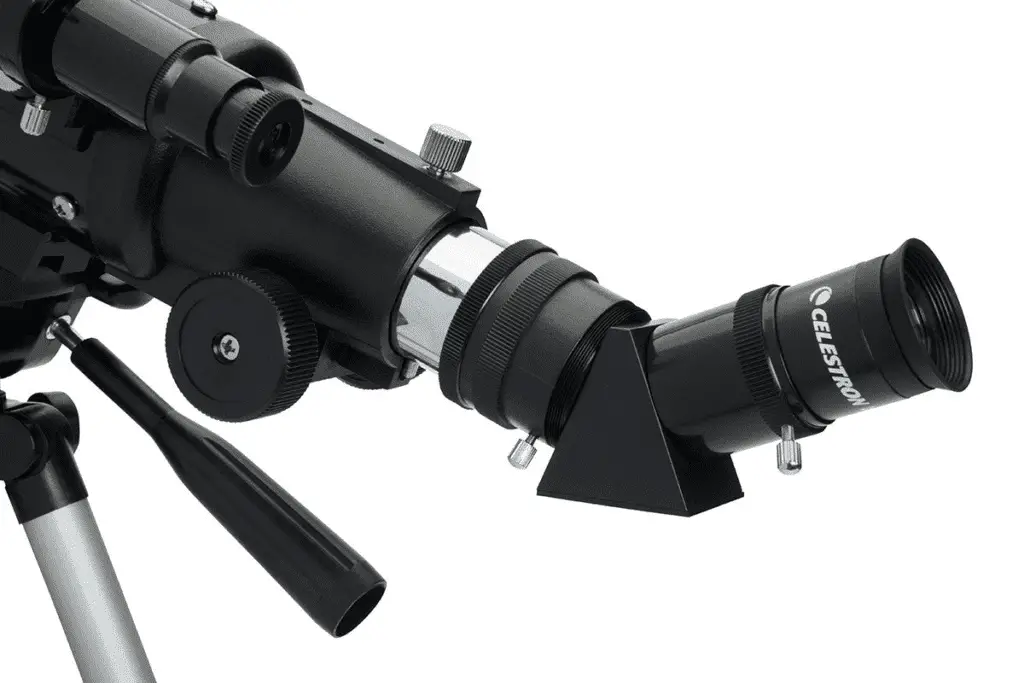
Overall I would rate the tripod as a nice thing to add to this beginner package. However I can’t rate it very high in terms of sturdiness. Weighing just 1.8lbs (0.81kg) it’s hard to expect more. It’s again a compromise for maximum portability.
The Celestron Travel Scope strong points:
With the total kit weighing just 3.3 lbs (1.5 kg) the entire set is very portable and you can take it with you anywhere and expect great optics and views. The backpack fits perfectly and gets full marks. The altazimuth mount ensures an easy and smooth movement which is important not only when tracking object but also when you keep following them (in the case of stellar objects).
Then another strong point is the fact that it’s easy to setup and easy to use . Which makes it an ideal gift for a pre-teenager.
The Celestron Travel Scope weak points:
At first there weren’t any obvious weak points for this telescope given it’s dimensions and price range. We feared that the tripod would be just a too light and not sturdy enough as that can be a problem with even higher priced telescopes, but it did act very well. The thing that could have been improved was the finder scope that gives this telescope a nicer look similar to higher priced telescopes, but overall it’s all that useful.
Overall this is a pocket rocket telescope that delivers on it’s promises having great crystal clear optics and score high on the portability scale. As a first budget telescope this is one of the best options available.
Click here for the best price on this telescope
Technical Specifications
The actual numbers for the Travel Scope 70 Model 21035.
About The Author

- Business, Edu & Gov
- Adorama Rentals
- 800.223.2500
- Address Book
- Log In | Register
- Adorama Business Sign-In

Celestron Travel Scope 80, Portable Refractor Telescope w/Smartphone Adapter
SKU: CNT80 MFR: 22030
- Type : Refracting
- Aperture : 3.2" (80mm)
Slight Delay Free Shipping
Usually ships within 2-5 Days
Celestron Customer Reviews
Review Summary
Questions & Answers

Celestron 22030 Travel Scope 80 Portable Telescope with Smartphone... › Customer reviews
Customer reviews.

Celestron 22030 Travel Scope 80 Portable Telescope with Smartphone Adapter and Backpack,Black
Top positive review.
Top critical review
There was a problem filtering reviews right now. please try again later., from australia, there was a problem loading comments right now. please try again later..
- Next page →
- Corporate Information
- Press Releases
- Amazon Science
- Protect and build your brand
- Independently Publish with Us
- Sell on Amazon
- Drive with Amazon Flex
- Advertise Your Products
- Associates Program
- Host an Amazon Hub
- COVID-19 and Amazon
- Your Account
- Your Orders
- Delivery Rates & Policies
- Returns & Replacements
- Manage Your Content and Devices
- Recalls and Product Safety Alerts
- Conditions of Use & Sale
- Privacy Notice
- Interest-Based Ads Notice
To take advantage of all HSN.com has to offer, please upgrade your browser to a newer version. You may get the latest here: browsehappy.com .
Celestron Travel Scope 80 Portable Telescope with Smartphone Adapter

Quantity 1 2 3 4 5 6 7 8 9
Promotional Offers
New to HSN? $10 off your first order with code HSN2024. See Details
- ExtraFlex available when paying with the HSN Card or QCard. Select the FlexPay option above and then select ExtraFlex. Credit terms apply. Learn More

HSN Card and QCard perks Apply online or call 1-800-695-1418.
Customers also viewed, product description.
- Optical tube
- Mount/tripod (preassembled)
- 20mm eyepiece
- 10mm eyepiece
- Erect image diagonal
- 5x24 finderscope
- Smartphone adapter
- SkyPortal app
- Starry Night Basic edition
- Backpack to store scope and accessories
Free Exchanges
If you're not satisfied with your purchase for any reason, our return policy allows you to send back returns-eligible merchandise within 30 days of the date you received the package for an exchange. Simply use the HSN Return Label within 30 days of receipt to return your item for a free replacement of the same item in a different color or size. If your request for an exchange results in any additional merchandise or shipping costs, and you paid by credit card, your credit card will be charged for those additional costs. Payment methods other than a credit card may result in an order cancellation & a refund may be issued. If the requested exchange is no longer available, including items on waitlist and advance order, HSN will issue a refund and not deduct the HSN Return Label fee . Learn more.
- The erect image star diagonal makes the optical tube ideal for using as a spotting scope during the day.
- Setting up the telescope is a breeze, so you can begin observing in no time. Even on your first time out, you can assemble the telescope and its accessories in just a few minutes.
- The adjustable tripod legs allow you to customize the telescope’s height or place it on raised surfaces like a picnic table. The total telescope kit weighs in at just 4.5 pounds—perfect for impromptu observing sessions or transporting wherever life’s adventures take you.
- Manual Alt-Azimuth telescope Navigate the sky with a pan handle Alt-Az control with clutch for smooth and accurate pointing. Move the clutch in an up/down, left/right fashion to track your object in the eyepiece.
- The permanently mounted finderscope will help you quickly center an object in your eyepiece for easier observing.
- Smartphone Adapter – Image celestial or terrestrial objects with this smartphone adapter. With its light, rigid frame, this accessory allows you to connect any smartphone to any telescope eyepiece with an outside diameter of 45 mm or smaller. The additional magnification provided by the eyepiece allows your phone to capture great images of the Moon and planets.
- This smartphone adapter installs easily by clamping over the top of an eyepiece. The smartphone is held in position with the help of tightening knobs that securely lock your phone in place. Some large and/or bulky phone cases (including folio style cases) may need to be removed for the phone to fit in the adapter.
- Travel Backpack – A custom backpack comes with your telescope for you to store your optical tube, tripod, eyepieces and accessories comfortably.
- Starry Night Software Download Celestron’s Starry Night Software and learn about the night sky, celestial objects, and how to plan your next observing session. Celestron Starry Night Software is the premier astronomy software package on the market, providing resources and knowledge to view our solar system and beyond.
- 80mm refractor telescope with fully coated glass optics and a lightweight frame.
- Custom backpack included to store your telescope and accessories comfortably.
- Adjustable height tripod.
Specifications
The key specs, top picks for you, review breakdown.
I bought this as a gift for my nephews. They are really enjoying looking at the stars and planets. Very happy for this high quality.

Was amazing
Purchased this as a gift for my son. We finally were able to see the moon so we pulled it out and looked. Wow. amazing how clear it is. only thing is the one screw to hold the viewer isnt holding very tight. Need to see if we can get a new one.
Love my telescope
Shipping was fast. I haven't used it but did open package and I am looking forward the next full moon to use. It is light secured backpack and I am sure I will have many uses.
Sky viewing
Ya I got this one for too view the moon and plants too see how they look it is nice with software too download too see on phone too find planets moon stairs asteroids the only things did not come with moon fitter blue tooth remote you have too get them if you want them

Celestron Travel Scope 80 Review: Could be Worse
- • COMES WITH A BACKPACK
- • WELL COATED GLASS LENSES
- • LOW PRICE
- • SHAKY TRIPOD
- • SHORT OPTICAL TUBE
- • USELESS 5X24 FINDER
This is a functional travel scope with well-coated lenses, but nothing more.
Celestron Travel Scope 80 is a telescope that was manufactured to be as cheap as possible. This brings with it a lot of plastic parts and low-quality optics.
Around this price range, it is really hard to find a compact telescope that is able to provide stability and optical quality. A tabletop reflector is the closest thing to perfection for 100$. But it is a tabletop after all and less convenient than a tripod telescope. Particularly if you are going to use your telescope for camping.
Celestron Travel Scope’s don’t provide the best optics for the price. But that is not what they are built for. These telescopes are made to be carried around as easily as possible, and people who use them don’t really care that much about whether there is color defects in the image or it is hard to focus at high magnifications.
The build doesn’t feel sturdy and durable.
This telescope is mainly for kids and people who like to use it for hunting or bird viewing. In short, this is not a device built specifically for astronomy. It is just a scope on a plastic tripod that is easy to carry around. That is the reason why it comes with a backpack.
If you are going for the best optics possible for the price, Zhumell Z100 and Orion Skyscanner 100 are the best competitors at this price range in optics.

The optical quality, as I’ve said before, is not that good. Don’t get me wrong, this is not a toy. The lenses are glass, and they are fully coated. The problem is the optical tube is not high quality with lots of plastic parts , and it is particularly short . This results in inevitable color defects and lowers sharpness overall.
The optics are “decent”.
You can see the Moon’s of Jupiter and Rings of Saturn as a yellow disk barely distinguishable from the planet. You won’t get much else from the Solar System. Don’t buy this telescope for planetary detail.
The Moon looks pretty good as it does with most other telescopes. This is the strongest aspect of this telescope. It is a nice device for viewing the Lunar Surface in the spur of the moment or while camping outside. Viewing the Moon is fun for kids as well.
You can get views of exceptionally bright deep space objects. But don’t expect a decent performance in this area.

The mount is the most frustrating part of this telescope. I usually don’t expect anything rock-solid with tripods or mounts at this price range. But to make the tripod fit in the backpack Celestron built in a lot of screws that create instability on all levels and the mount is plastic. The base is simply annoying.
The mount is weak but lightweight.
If a low-quality base is a sacrifice you are willing to make for a tripod that fits in a backpack, you will be OK with the mount. If not, this model is not for you.
Accessories
Celestron Travel Scope 80 comes with 10mm and 20mm Kellner eyepieces . They are decent eyepieces for the price, and they come with most other beginner models.
The accessories are dreadful.
The 5×24 finder is useless. A telescope this size doesn’t even need a finder, much less a toy.
The 2x Barlow works . That is all I can say about it. For high-magnification viewing, you might as well get a good eyepiece. But that would increase the cost of the telescope.
The diagonal lowers the image quality. It is usable for daytime viewing.
The optical quality and the stability of the mount is sacrificed so that the telescope is easily carried around in a backpack.
The 5×24 finder is useless.
The reason I am giving this telescope a good rating is that it is low-priced and it comes with a backpack . I understand that some people just want to look at the Moon or view the Earth in the daytime.
Those kinds of people don’t have the time to think about whether the optics are well collimated or the focuser is well-made. They just want to use the scope from time to time and don’t care about it other than that. Or they just want to buy something for their kids , and they want something safe and easy to use, but they don’t want a toy either.
This is well-priced portability, not astronomy.
Celestron Travel Scope 80 is a strong recommendation from us for those people. Its optics are not the best they can be, and the tripod is shaky. But it is able to show what a telescope can do, and you don’t have to worry about technical , boring stuff while using it.

- telescope under 200
- telescope under 300
- telescope under 500
- telescope under 1000
- portable telescopes
- barlow lenses
- binoculars under 50
- binoculars under 200
- binoculars under 300
- binoculars under 500
- thermal binocular
- compact binoculars
- binoculars for alaska cruise
- zoom binoculars
- 10x42 binoculars
- image stabilized binoculars
- 8x32 binoculars
- bushnell binoculars
- binoculars for safari
- theater binoculars
- binoculars for whale watching
- binoculars for wildlife viewing
- marine binoculars
- how far can binoculars see
- how to choose binoculars for bird watching
- what do numbers on binoculars mean
- spotting scope vs binoculars
- scopes for 6 5 creedmoor
- scope for marlin 60
- scope for ar 10
- scope for marlin 336
- scope for mini 14 ranch rifle
- scope for 30 06
- scope for remington 700
- scope for 20 250
- scope for savage 220
- spotting scope tripods
- handgun scopes
- scopes under 300
- rifle scope under 200
- microscopes for students
- microscope for coins
- microscope for iphone
- microscope for electronics repair
- stereo microscopes
- pocket microscopes
- digital microscope
- compound microscope
- usb microscope
- rangefinder binoculars
- rangefinder for long range shooting
- rangefinder for bow hunting
- rangefinder under 100
- rangefinder under 200
- monocular for backpacking
- monocular for bird watching
- night vision camera
- backup camera with night vision
- night vision binoculars
- night vision scope for hunting
- night vision goggles under 500
- night vision scope under 500
- night vision scope under 1000
7 Best Travel Telescopes to Watch the Sky from Any Place You Want
If you are an outdoorsy person or an aspiring astronomer, a telescope is a must-have. There are tons of high-end stationery telescopes on the market, but what if you want to stargaze on your camping trip? Thanks to technological advancements, there are portable telescopes that are superbly compact yet offer high-quality magnification. So which is the best travel telescope to get for the most magical travel experiences?
We rounded up a list of the best-rated portable telescopes to help you make the choice from the endless options available on the market. Some of the features we considered in our review include focal length and ratio, aperture, eyepiece diameter, mount, and weight among others. The features determine the efficiency and convenience of the telescope. For instance, weight and mount will affect the telescope’s portability and ease of handling while the aperture affects the quality of images you’ll be viewing.
- Quick Summary
- Editor’s Choice: Celestron Travel Portable Scope 80 "This telescope from the world-famous brand that is a lightweight and portable pick for terrestrial and celestial viewing when traveling. 4.5-pound weight. Preassembled tripod with adjustable height. Comes with a backpack."
- Upgrade Pick: Levenhuk Skyline PLUS 90 MAK "A portable telescope for those in search for better capabilities, this model offers crisp clear images and can be used to explore the deep sky and outer space. Maksutov-Cassegrain telescope. 4.4-pound weight. Lifetime warranty."
- Best for Entry-Level Users: Levenhuk Skyline Travel 50 "A compact and basic option for beginners and/or kids, this telescope comes at a very affordable price, yet sports a lifetime warranty and is overall easy to use. Lightweight and short optical tube. Comes with multiple accessories. Backpack included in the purchase."
- Best for Amateur Astronomers: Barska 88x Compact Refractor Telescope "Another compact and portable option, this telescope features an adjustable tabletop tripod that is easy to use and offer crystal clear images. 4.4-pound weight. Comes with two Kellner eyepieces and Barlow lens. Lifetime warranty."
- Best for Viewing Dark Skies: Sky-Watcher Evostar 72 APO Refractor Telescope S11180 "This compact refractor telescope comes with an aluminum case for portability and would be a good choice for astrophotography and excellent viewing. Dual-speed Crayford-type focuser. 4.3-pound weight. Compatible with most mounts."
- Most Versatile: Celestron C90 Mak Spotting Scope 52268 "This spotting scope can be used for both terrestrial and astronomical viewing and comes with high-quality optics and a backpack. Razor-sharp images. 20 mm eye relief. Lifetime warranty."
- Best Terrestrial Telescope: Celestron Regal M2 100ED Spotting Scope 52306 "Another spotting scope that comes with a rotating tripod mount and a 1.25 in eyepiece mount that allows you to use astronomical eyepieces. Allows photographing. Waterproof and fogproof design. Lifetime warranty."
Top 7 Travel Telescopes Review 2024
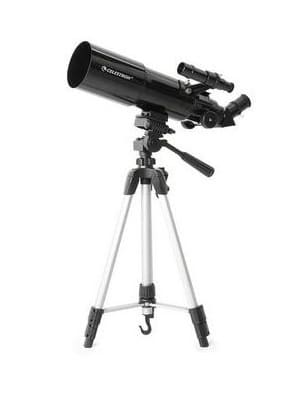
Celestron Travel Portable Scope 80
- Type: refractor
- Aperture: 80 mm
- Focal length: 400 mm
- Focal ratio: f/5
- Magnification: 11–189x
- Mount: alt-az
- Weight: 4.5 lbs
- Warranty: 2 years
Other features: 10mm and 20mm eyepieces; 5×24 finderscope; SkyPortal app; preassembled adjustable height tripod
Celestron is a world-famous brand known for high-end telescopes. They also have a line of portable scopes and this 80 mm (3 in) is one of the best models for terrestrial and celestial viewing when traveling. With it, you can view the moon, planets, deep-sky objects, and star clusters.
The scope is extremely portable as its entire set weighs only 4.5 pounds. Setting it up is also very straightforward. Within a few minutes, you’ll have assembled it together with all the accessories.
The telescope comes with a full-size aluminum photographic tripod which is pretty sturdy. The tripod has a smooth and easy movement which allows you to track stellar objects easily, plus it allows you to customize the scope’s height or easily place it on raised surfaces.
Also featured are two eyepieces; 10 mm and 20 mm. They offer different magnifications so you can view your target objects clearly. The most exciting thing about this scope is its erect image diagonal that allows right-side-up viewing which is perfect for terrestrial viewing.
Even more, the scope features a permanent red dot finderscope that helps you to center an object on your eyepiece quickly for easier viewing. The scope further distinguishes itself with extra accessories like the smartphone adapter that allows you to connect your smartphone to its eyepiece so you can capture brilliant images of the planets and the moon.
As if that’s enough, the scope comes with a backpack custom made to fit its entire set including all the accessories. This makes it even more portable.
With a 2-year warranty, this telescope stands out as one of the best compact travel telescopes on the market. Its aperture is large enough to attract a lot of light for the best image quality.
- Easy to set up
- Two eyepieces
- Lightweight
- Multiple accessories
- Great focal length and ratio
- Offers excellent value for money
- 2-year warranty
- The mount may seem flimsy and difficult to use
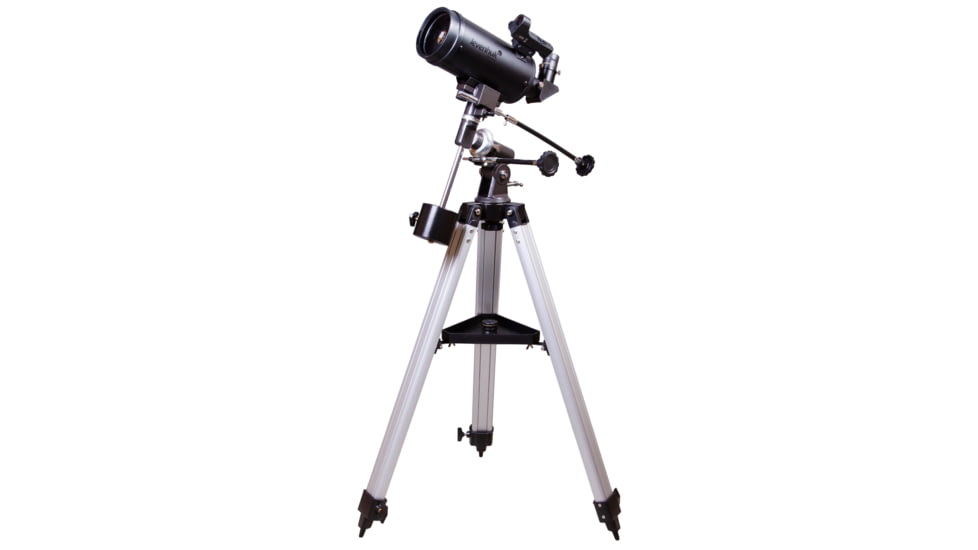
Levenhuk Skyline PLUS 90 MAK
- Type: Maksutov-Cassegrain
- Aperture: 90 mm
- Focal length: 1250 mm
- Focal ratio: f/12.5
- Magnification: up to 180x
- Mount: equatorial EQ1
- Weight: 4.4 lbs
- Warranty: lifetime
Other features: 10mm and 20mm eyepieces; red-dot finderscope; catadioptric scheme
This is one the best premium and upgrade pick for astronomy enthusiasts. It is not your typical entry-level scope as it has far better capabilities. Despite its compact build, you can use it to explore the deep sky and outer space.
The telescope is incredibly small and lightweight coming in at 4.4 pounds only. It utilizes the catadioptric scheme and with its perfect optical capabilities, you can view the moon and planets with their satellites.
Further, the scope has fully multi-coated optics and a 90 mm (3.54 in) aperture that gathers an optimum amount of light to allow you to observe dim objects and stars in the night sky. The further limits of the solar system will also be discernible, but you won’t get the details.
The scope comes with two eyepieces that offer average magnification and a diagonal mirror that you can use to observe terrestrial landscapes. Also included in the set is an aluminum tripod that has an accessory tray. It has a super-durable and sturdy build and you can adjust its legs to increase its height.
Moreover, the telescope features a red-dot finder scope that helps you easily center objects for easier viewing in the sky.
In sum, with a lifetime warranty backing, this is amongst the very few portable telescopes with advanced features. Its superior features like a powerful magnification and great focal length ratio make it a perfect upgrade option.
- Compact and lightweight
- Easy to use
- 90 mm aperture for crisp clear images
- Fully-multicoated optics
- Convenient equatorial mount
- Durable and sturdy adjustable tripod
- Lifetime warranty
- Hefty price tag
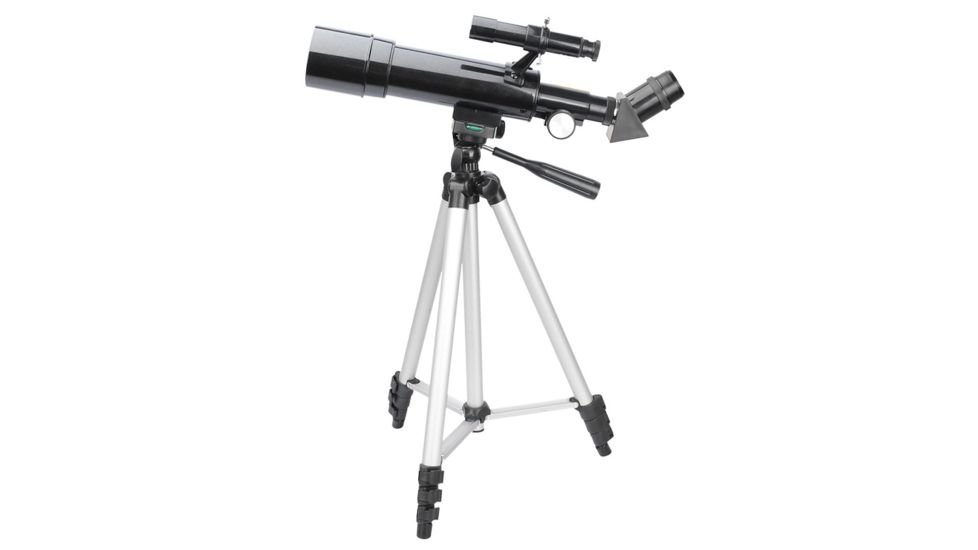
Levenhuk Skyline Travel 50
- Aperture: 50 mm
- Focal length: 360 mm
- Focal ratio: f/7.2
- Magnification: 100–135x
- Weight: 4.8 lbs
Other features: 1.25in H8 and 1.25in H20 eyepieces, 2x optical finder, 3x Barlow lens; backpack included
Looking to learn astronomy basics and maybe pick it up as a hobby? This refractor scope by Levenhuk is your best chance of becoming an avid space investigator. It is a fantastic entry-level choice, perfect for kids and beginners. With it, you can observe the planets, moon as well as the brightest objects in deep space.
The telescope is super-easy to install hence perfect for kids and entry-level users. Like all the other Levenhuk telescopes, this scope’s optics are fully multi-coated to provide you with crisp clear images without any aberrations.
Plus, it has myriad accessories including a diagonal mirror, Barlow lens, and two eyepieces which yield its 135x magnification. Additionally, the scope features an optical tube that is ultra-lightweight and compact. In fact, it is half the size of most refractor tubes. It is installed on an alt-azimuth mount which is very convenient as it never requires any preparatory adjustments.
The scope also comes with an adjustable aluminum tripod and a backpack that can accommodate all its components. With the backpack, even a kid can carry the scope around comfortably.
Overall, it is hard to beat the Levenhuk 50 as an entry-level portable telescope. It has a super-durable build which is backed by a lifetime warranty and top-notch features for unparalleled image quality.
- Can be used for both terrestrial and planetary observations
- The lightweight and short optical tube
- Easy to install alt-azimuth mount
- Coated optics
- Multiple accessories including Barlow lens
- Great for kids and beginners
- Some users found the aluminum tripod too light
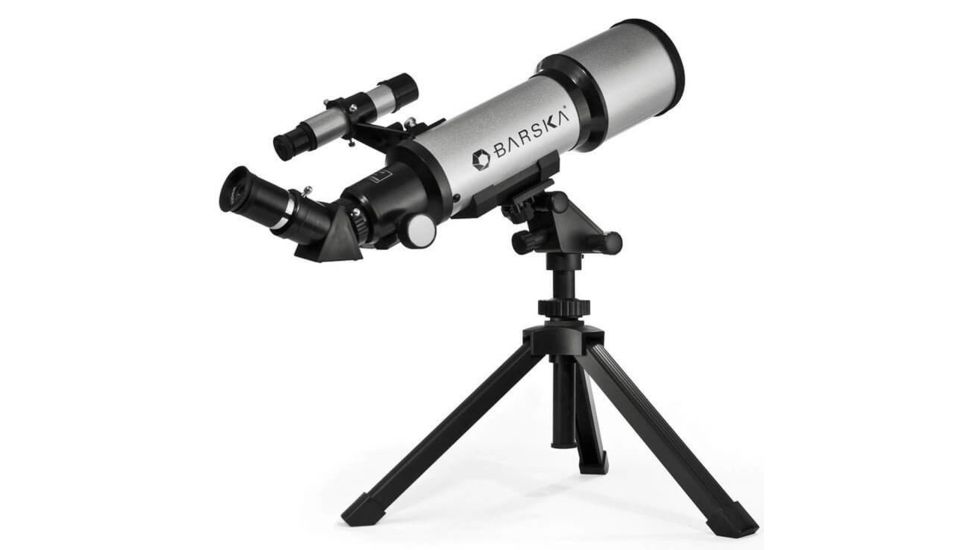
Barska 88x Compact Refractor Telescope
- Aperture: 70 mm
- Focal ratio: f/5.7
- Magnification: up to 88x
- Warranty: limited lifetime
Other features: tabletop tripod; 5×24 finderscope; 1.5x and 3x Barlow lens; K9 and K20 1.25″ eyepieces
This is another compact yet powerful refractor telescope ideal for both celestial and terrestrial viewing. It is packed with features and accessories that will let you enjoy the night sky in all your outdoor escapades effortlessly.
With the alt-az mount, the scope is such a breeze to set up. It also comes with a tabletop tripod that has adjustable legs. It has super-fine motor controls for both vertical and horizontal movement.
With a fully coated achromatic 70 mm (2.75 in) objective lens and 400 mm (15.7 in) focal length, you can trust this scope to give you crisp clear images without any aberrations. Additionally, it comes with two Kellner eyepieces and Barlow lens which are a sure guarantee for real-time images.
The Barska telescope is a beautifully compact and wide angles scope perfect for the astronomer on the go. It weighs a mere 4.4 pounds and comes with a carrying case for ease of portability.
Also featured is a 5 by 24 finderscope that will help you to center objects quickly for viewing.
Overall, this is one of the best travel telescopes for astronomy out there owing to its first-rate features and multiple accessories. The lifetime warranty even makes the deal sweeter.
- Compact and lightweight build
- Adjustable tripod
- Fully coated lens
- Carrying case
- Great for both celestial and terrestrial viewing
- Crystal clear images, both near and far
- Plastic construction
- Some users find the tripod a bit small
- The eyepieces may be underpowered for advanced users
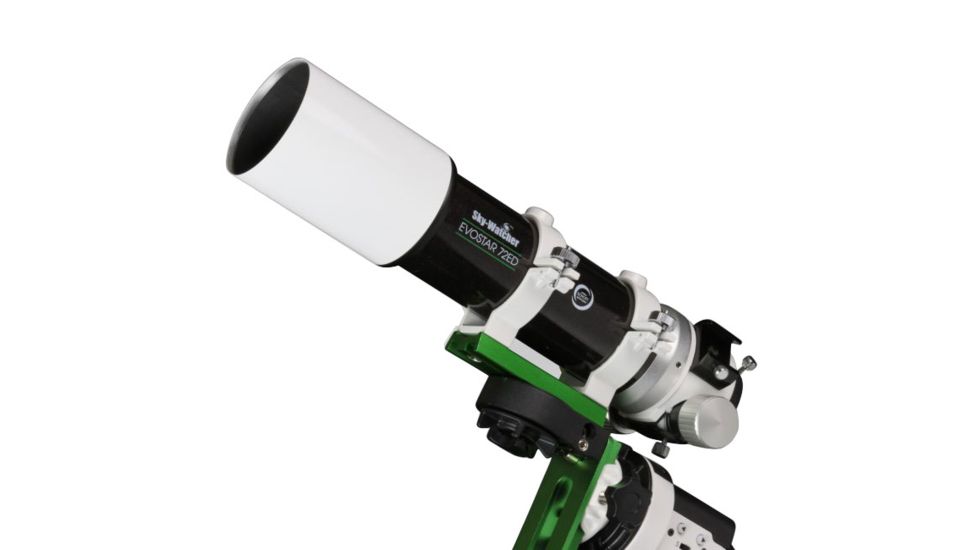
Sky-Watcher Evostar 72 APO Refractor Telescope S11180
- Aperture: 72 mm
- Focal length: 420 mm
- Focal ratio: f/5.8
- Magnification: 10–142x
- Weight: 4.3 lbs
- Warranty: 2-year limited
Other features: dual-speed 2-inch Crayford-type focuser; aluminum case
The Evostar is another satisfying compact refractor telescope to use. It is a prime choice for amateur astronomers looking to invest in an advanced instrument they can use for astrophotography and excellent viewing.
The telescope is incredibly lightweight coming in at 4.3 pounds. Plus, it has a short tube system as its tube measures a mere 42cm (16.5 in) and weighs 4.3 pounds. Its removable dew shield and durable aluminum case make it a perfect get-up-and-go telescope.
The scope’s best selling point is its ability to view and image under dark far-flung skies. Its doublet refractors will give you planetary and deep-space phenomenon views that are contrast-rich.
Apart from the 72 mm (2.83 in) apochromatic refractor, the scope owes its capabilities to its 420 mm (16.5 in) focal length and dual-speed 2-inch Crayford-type focuser. The focuser offers both fine and coarse focusing.
Essentially, the scope is incredibly easy to set up. It is compatible with a couple of mounts including the sky adventurer mount and the VIxenVersa Go mount.
The bottom line is, this is the ‘It’ telescope for a traveling astronomer who wants a clear view of dark skies. Its price point is easy on the pocket and its 2-year warranty makes it a sweeter deal.
- Incredibly lightweight and compact
- Great focal length and magnification
- Top-quality focuser
- Offers clear images of a coal-dark sky
- Easy to set up-compatible with most mounts
- Aluminum case
- Doesn’t come with a tripod
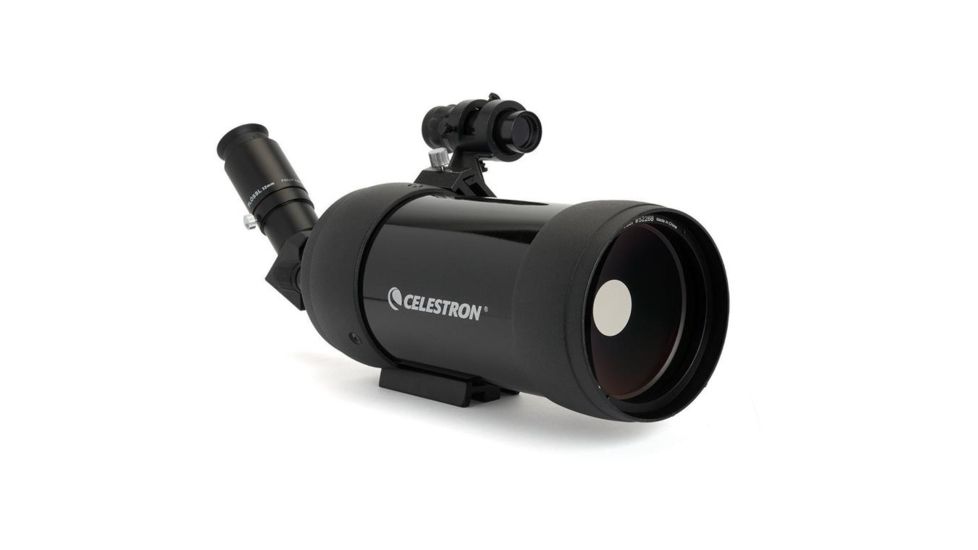
Celestron C90 Mak Spotting Scope 52268
- Type: Maksutov spotting scope
- Focal ratio: f/13.89
- Magnification: 39x
- Weight: 5 lbs
- Warranty: lifetime limited
Other features: 20 mm eye relief; erect image system for terrestrial and astronomical use; 32 mm eyepiece; backpack included
Here is another fantastic choice for both astronomical and terrestrial use from the giant telescope brand Celestron. The C90Mak is not only one of the best portable scopes but also an exception all-around optical instrument highly preferred by advanced scope users.
The telescope utilizes the Maksutov optical design which is known to be the most portable design with a wide range of applications. It is also very straightforward to set and use.
The C90 Mak distinguishes itself with excellent optics including a 90 mm (3.54 in) aperture and a 1250 mm (49 in) focal length. You can trust it to deliver razor-sharp images over a wide field. The full-features spotting scope is fully-multicoated and together with the high-quality 32mm eyepiece offer you the best quality views.
Even more, the scope features an Erect image system that allows you to view celestial objects at a 90-degree angle as well as correct the orientation of images to view terrestrial objects.
The scope is slightly heavier than all the other options on this list but 5 pounds won’t break your back. Plus it comes with a convenient backpack that packs all its components making it easier to carry around.
All considered this is one of the best versatile scopes that money can buy. It is designed to perform well in different viewing situations without making you break a sweat and it offers a 20mm eye relief which is a rarity in most compact telescope models.
The lifetime warranty should give you the buyer’s confidence to purchase this scope.
- Best portable design
- 20mm eye relief
- Excellent optics
- Razor-sharp images over a wide field
- Designed to be used in various viewing situations
- It is slightly heavier than others within its range
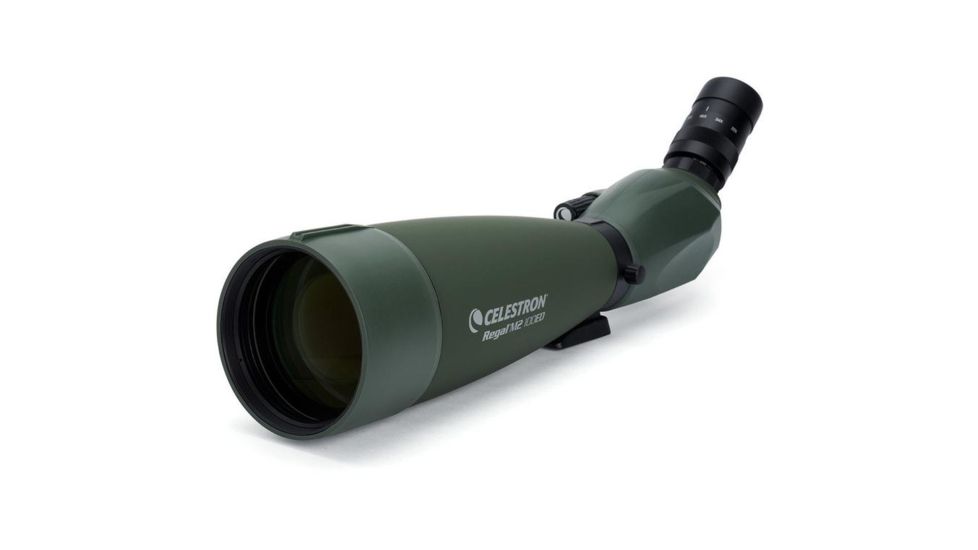
Celestron Regal M2 100ED Spotting Scope 52306
- Type: spotting scope
- Aperture: 100 mm
- Focal length: 540 mm
- Focal ratio: f/5.4
- Magnification: 22–67x
- Mount: rotating tripod mount with detents
- Weight: 5.3 lbs
Other features: Extra-Low Dispersion (ED) glass; dual focus mechanism; waterproof and fogproof; 22–67x zoom eyepiece; 1.25 in eyepiece mount for astronomical eyepieces; dual focus; T-adapter ring included; 20mm eye relief
Once again, Celestron has outdone itself with this next generation top-performing regal F-ED spotting scope. It has been painstakingly designed to ensure you have a wonderful experience in the great outdoors.
The Regal M2 has been optimized to produce sharp and crisp clear images both at night and during the day. It has a 100 mm (3.9 in) aperture that allows the optimum amount of light to enter for the best image quality.
It also has a couple of advanced features found in high-end and pricier scopes like the extra-low dispersion glass. It is slightly heavier than other models on this list, but its magnesium alloy body does a great job at cutting its overall weight.
Also featured is an upgraded dual focuser that allows you to bring your subjects into focus 2 times faster than the standard focuser. What’s more, the scope is nitrogen purged to prevent fogging and it has a waterproof build so you can use it in any kind of weather.
Another distinguishing feature of the Regal is its photographing abilities. All you have to do is attach your camera to it using a T-ring and the T-adapter it comes with for the most phenomenal images.
In sum, the Regal is a perfect companion for any outdoorsy person as it can be used for bird watching, long-distance viewing, observing nature, and occasional astronomical viewing. Its 20mm (0.79 in) eye relief and lifetime warranty make it one hell of a worthy buy.
- Durable build
- Waterproof and fogproof
- Allows photographing
- Great optics – 100 mm Aperture and ED dispersion glass
- 20 mm eye relief
- Dual focus mechanism
- Eyepiece mount
- A bit heavier than other compact telescope models
- Things to Consider
Before you go shopping for a portable telescope, you better arm yourself with some useful information if you don’t want to regret your choices. Other than a bunch of brands and models, there is a lot more to consider when choosing a travel telescope. This section has all the essential knowledge you need including features to consider when choosing a portable scope and the difference between a spotting and traveling scope.
Features to consider when choosing a travel telescope
These are the features you must be keen on to make the best buy.
- Weight and portability
This is a very crucial consideration especially if you are an avid traveler or backpacker. You don’t want a telescope that will weight you down or add extra weight to your luggage. You have to find a scope that balances weight and quality perfectly. The Levenhuk Skyline PLUS 90 MAK is a prime example of a premium quality scope that is super-lightweight and easy to manage.
Be sure to check that the scope comes with a carrying case or bag that can easily fit all its components for easy portability.
There are three main types of scopes; reflector, refractor, and compound scopes. Reflector scopes use mirrors to gather and focus light onto the eyepiece. The Newtonian is the most common reflector scope. Refractor scopes use lenses to gather and focus light onto the eyepiece. Most of them use at least two lenses or even more and they allow you to gaze into the heavens.
The combination scopes use both mirrors and lenses and the most popular styles are the Maksutov-Cassegrain like the Celestron C90 Mak Spotting Scope on this list and the Schmidt-Cassegrain.
This is the diameter of the lens or mirror in your scope. The bigger the aperture the better as it will allow a maximum amount of light to enter the eye-piece to give you the best quality images. A great aperture for a compact scope should be more than 50 mm (about 2 inches) and if you can afford go for bigger ones of about 100 mm (3.9 inches).
- Magnification
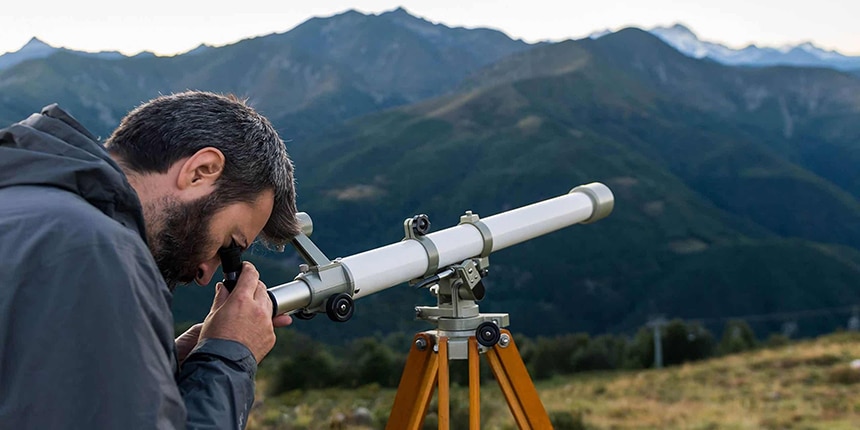
All telescopes can magnify objects in the sky and the land. The eyepiece quality and focal length affect the magnification of a scope. Contrary to popular opinion a high magnification is useless if you can get clear images. So, you need to get a model that perfectly balances magnification and top-performing optics like the Celestron Regal M2 100ED Spotting Scope .
Most telescopes use two main lenses; eyepiece lens and objective lens. Lenses are essential as they gather more light than your eye could and focus it to make far objects appear magnified, clearer, and brighter. The objective lens is larger than the eyepiece lens.
Go for a model with larger lenses as the larger the lens the more light a telescope can gather. This will give you the brightest and clearest images.
- Focal length and ratio
This is another basic feature. It is the total distance between your telescope’s focal point and the mirror or lens. With a bigger focal length and ratio, objects will appear much bigger than they would with a small length.
If you can get a scope with a large aperture and focal length you, will get the best image qualities though the aperture is more essential compared to focal length.
The mount is usually ignored by many but it does affect the overall experience of using the telescope. There are two popular types of the mount; equatorial and alt-azimuth. The equatorial mount is the most expensive but the handiest when it comes to navigating stars as it is designed to rotate the sky.
The alt-azimuth mount of the other hand is designed to move left and right and up and down. It is more compact in its build and way affordable but you will have to keep adjusting it when tracking the sky.
Finders are crucial accessories that should not be overlooked. Any astronomy enthusiasts should have a finder as a top priority because it helps in pointing the telescope at particular small and faint objects in the sky.
There are three kinds of finders; the peep sight which is the most basic and great for beginners, the reflect sight, and one that mimics a miniature scope. The reflect sight projects a small red laser towards the sky to help you find objects while the one like the miniature telescope uses crosshairs to find the faintest objects in the sky.
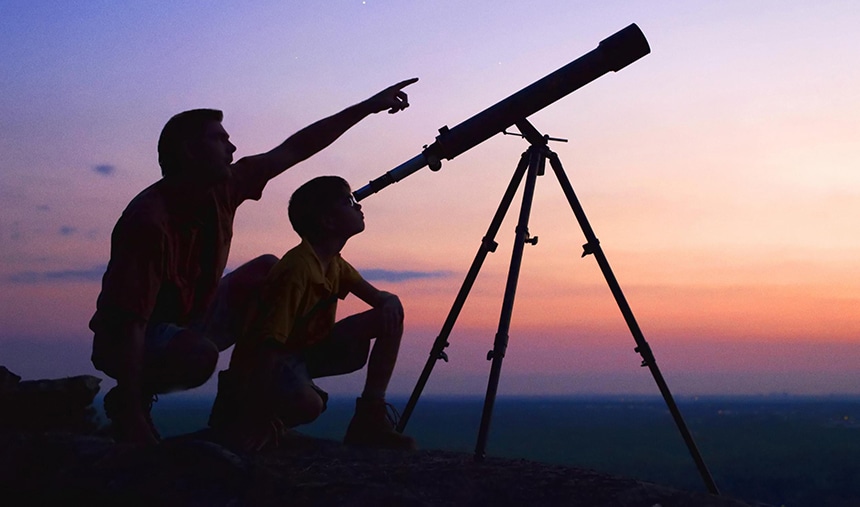
These are equally essential components of a telescope like all the others discussed above. When choosing an eyepiece, look through it to ensure it is comfortable. A low-quality eyepiece will force you to squint every time as you wouldn’t be able to see your subjects clearly.
- Telescope vs spotting scope
There are a few differences between a telescope and a spotting scope and they outweigh each other in various ways. If you intend to do a lot of terrestrial viewing and just some basic astronomical viewing then go for a spotting scope. Spotting scopes use lenses to gather and focus light and they are less expensive, easier to use, more portable, and perfect for low-light viewing. They are also the best for short-range viewing of moving objects like birds and other animals.
Telescopes on the other hand use either mirrors or lenses or both to gather and focus light. They gather a lot of light and have a high magnification power which means they are perfect for viewing distant objects both on land and in the sky. They are longer in their build, thus don’t pack as easy as spotting scopes but some compact models are easy to tote around.
- What is the best telescope for viewing planets?
- Can I see galaxies with a telescope?
- How can I transport a telescope?
- Our verdict
With all the tips on this guide, you shouldn’t have any challenges choosing the best telescopes for your travel escapades. With the best travel telescope, you will be able to enjoy the night sky and unlock the finest details of the celestial and terrestrial objects that many people will never see. If you feel the brands and models are overwhelming you can simply choose to go with any of the top-rated products on our list and you will never regret your decision.
Our best overall choice, Celestron Travel Portable Scope 80 is one of the best all-around scopes on the market. It is incredibly lightweight and compact and has multiple superb features including a Skyportal app. The upgrade pick, Levenhuk Skyline PLUS 90 MAK is the best portable telescope you can get for deep sky and galaxy viewing. It has premium features including an equatorial mount and a finderscope.
Third, on our list is the Levenhuk Skyline Travel 50 which is the ultimate choice for kids and beginners. Its lightweight build and extra features like the 2x optical finder and Barlow lens make it one of the best travel telescopes on the market.
Your email address will not be published. Required fields are marked *
Save my name, email, and website in this browser for the next time I comment.
Post Comment
- 1 what can you see with a telescope
- 2 how to clean a telescope mirror
- 3 telescope vs binoculars
- 4 telescope vs microscope
- 5 reflector vs refractor telescope
- telescope filters Most popular | Aug., 2023
- 2 telescope under 100
- 3 portable telescopes
- 4 barlow lenses
- 5 telescope under 1000
- Top Picks Analysis

27 Best Travel Telescopes (Ranked!)
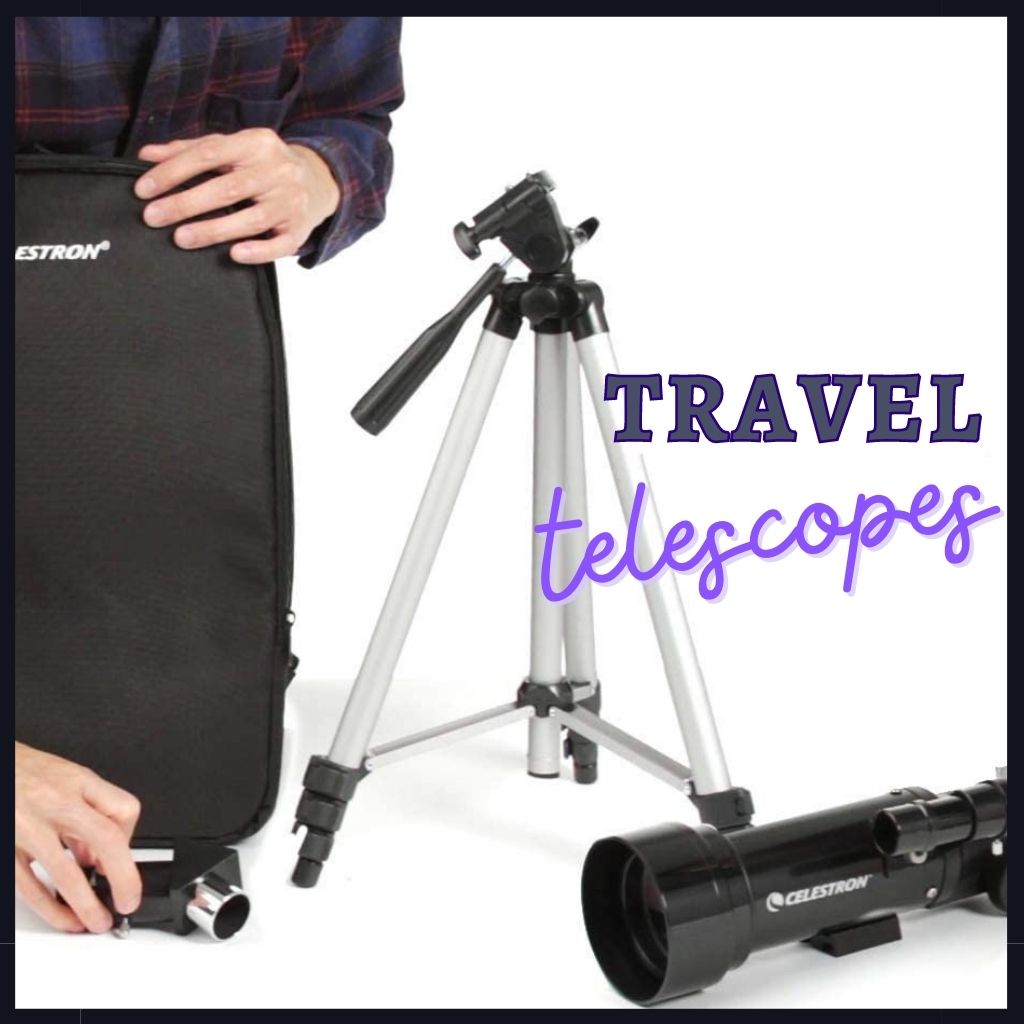
This site contains affiliate links to products. I may receive a commission for purchases made through these links.
Travel telescopes are specially designed instruments that cater to the needs of wanderlust-driven astronomers. These versatile devices prioritize lightweight construction, ease of setup, and superior optical quality, enabling enthusiasts to observe celestial wonders from various destinations without the burden of heavy equipment.
Embarking on a journey through the cosmos doesn’t have to be confined to your backyard. Imagine the thrill of gazing at distant stars, planets, and nebulae from breathtaking locations around the world.
To fuel your astronomical adventures on the go, travel telescopes emerge as the perfect companions for stargazers seeking portable and compact solutions without compromising optical performance.
This article presents a carefully curated list of the best travel telescopes, expertly ranked and evaluated based on their portability, performance, features, and value for money.
Table of Contents
Best travel telescope for beginners
The best travel telescope for beginners offers a user-friendly and accessible introduction to the world of astronomy. These telescopes are designed with simplicity in mind, providing easy setup, intuitive controls, and clear instructions.
They typically have a good balance between portability and performance, allowing beginners to easily explore celestial objects.
Here are some of them:
1. Celestron Travel Scope 70

The Celestron Travel Scope 70 is an excellent option for beginner stargazers. It features a compact and lightweight design, making it highly portable.
With a 70mm aperture, it offers good light-gathering capabilities for observing celestial objects. The telescope comes with two eyepieces, providing different magnification options and a convenient backpack for easy transportation.
You can use the same eyepieces across multiple telescopes of the same size.
2. Orion StarBlast 4.5 Astro Reflector

The Orion StarBlast 4.5 Astro Reflector is a user-friendly telescope suitable for beginners. It boasts a 4.5-inch aperture, allowing for clear and detailed views of the moon, planets, and some deep-sky objects.
The tabletop design provides stability, and its simple altazimuth mount facilitates smooth movements. The telescope includes two eyepieces and a red dot finder for easy object locating.
3. Meade Instruments Infinity 70mm AZ Refractor

The Meade Instruments Infinity 70mm AZ Refractor is a beginner-friendly travel telescope. Its 70mm aperture and fully coated optics deliver sharp views of celestial objects.
The altazimuth mount with slow-motion controls ensures smooth tracking. The telescope has two eyepieces, a red dot finder, and a sturdy tripod for stable viewing.
Best travel telescopes for stargazing overall
The best travel telescopes for stargazing excel in providing impressive views of celestial wonders during stargazing sessions. Consider factors such as aperture size, optical design, mount type, and portability when choosing the best travel telescope for your stargazing adventures.
Here are some recommended options:
4. Celestron NexStar 5SE
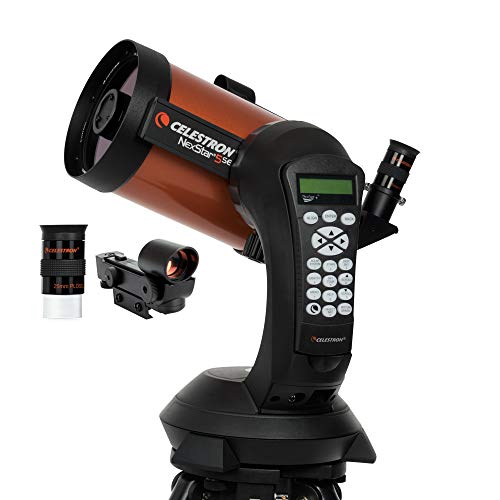
The Celestron NexStar 5SE is a compact, powerful travel telescope perfect for stargazing. Its 5-inch aperture and high-quality optics provide excellent views of celestial objects.
The telescope features a computerized mount, allowing for automatic object tracking and easy navigation. Its portable size and sturdy tripod make it a great choice for stargazers on the move.
Read the full review here: Celestron NexStar 5SE Telescope
5. Sky-Watcher Heritage 130P
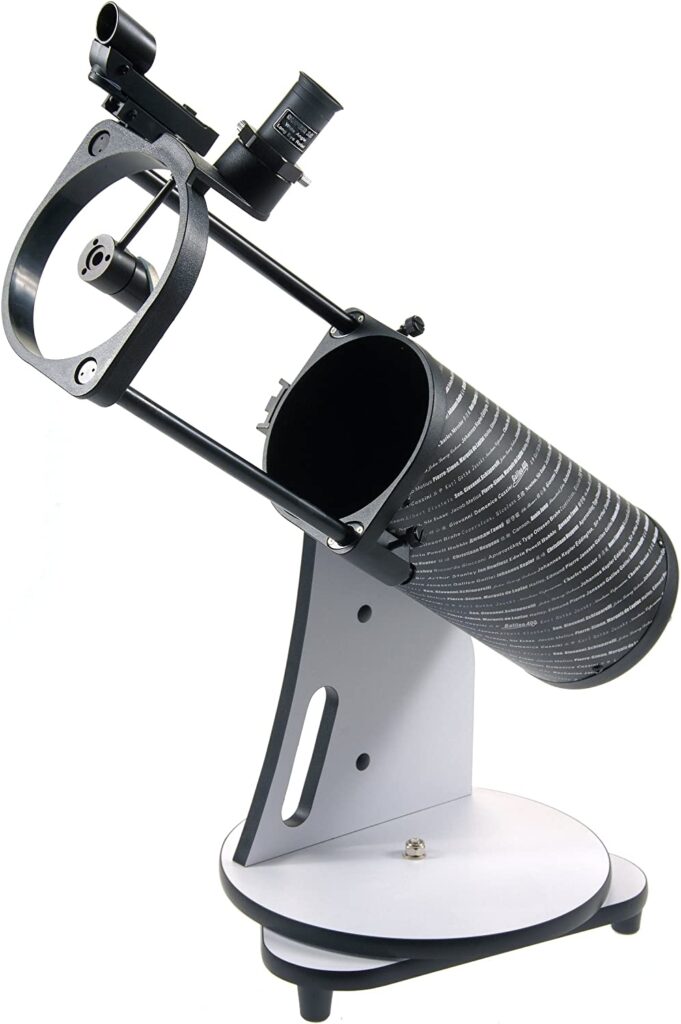
The Sky-Watcher Heritage 130P is a tabletop Dobsonian telescope renowned for its impressive performance in stargazing. It boasts a 130mm aperture, offering remarkable light-gathering capabilities.
This telescope provides sharp and detailed views of planets, stars, and even some deep-sky objects. Its compact size and lightweight design make it highly portable, and its simple altazimuth mount ensures smooth movements.
You may also like: Sky-Watcher Heritage 130P Review (Read Before Purchase!)
6. Orion StarMax 90mm Mak-Cass Telescope

The Orion StarMax 90mm Mak-Cass Telescope is a versatile travel telescope suitable for stargazing enthusiasts. It features a 90mm aperture and a Maksutov-Cassegrain optical design, which delivers high-resolution views of celestial objects.
The telescope comes with a sturdy equatorial mount, allowing for precise tracking and smooth movements. Its compact size and lightweight construction make it ideal for travel.
Best travel telescopes for astrophotography
The best travel telescopes for astrophotography combine portability and excellent imaging capabilities, allowing enthusiasts to capture stunning celestial images while on the go.
These telescopes are designed with features specifically tailored for astrophotography, such as wide apertures, low-dispersion glass, and precise tracking mounts.
Capture beautiful celestial images with your DSLR camera using compatible telescope adapters.
Below are some top choices:
7. Celestron Advanced VX 8-inch Schmidt-Cassegrain

- Large aperture
- Sturdy mount
- Requires skill and experience
The Celestron Advanced VX 8-inch Schmidt-Cassegrain telescope is a versatile choice for astrophotography. Its 8-inch aperture and Schmidt-Cassegrain design provide excellent light-gathering capabilities and sharp image quality.
The telescope comes with a sturdy equatorial mount that offers precise tracking for capturing long-exposure images of celestial objects.
Its portability and compatibility with various astrophotography accessories make it a top choice for traveling astrophotographers.
8. Orion ED80T Carbon Fiber Refractor

The Orion ED80T Carbon Fiber Refractor telescope is a lightweight and compact option for astrophotography on the go. With its 80mm aperture and premium extra-low dispersion (ED) glass, it delivers high-contrast and sharp images.
The telescope’s carbon fiber tube reduces weight and thermal expansion, ensuring stability during long exposure captures.
It is compatible with various astrophotography accessories, making it a versatile choice for travel.
9. Sky-Watcher Esprit 100mm ED Triplet APO Refractor

The Sky-Watcher Esprit 100mm ED Triplet APO Refractor is a premium travel telescope for astrophotographers seeking exceptional image quality.
Its 100mm aperture and triplet lens design provides superb color correction and high-resolution images.
The telescope comes with a robust equatorial mount, offering precise tracking for long-exposure astrophotography.
Its compact size and portable design make it suitable for traveling to dark-sky locations.
Best travel telescopes for kids
The best travel telescope for kids combines user-friendly features, durability, and educational value, providing young astronomers with an exciting and immersive stargazing experience.
They spark curiosity, encourage exploration, and create unforgettable astronomical memories for budding young astronomers.
Here are some telescopes to consider:
10. Celestron 76mm Classic FirstScope Telescope
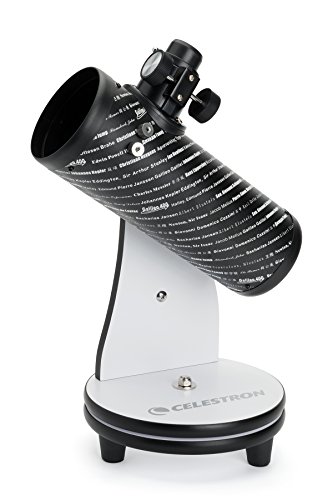
The Celestron FirstScope Telescope is an excellent choice as a travel telescope for kids. Its compact and lightweight design makes it easy for young astronomers to handle and transport.
This tabletop telescope has a 76mm aperture, providing clear views of the moon, planets, and bright deep-sky objects. The simple and user-friendly design makes it ideal for beginners, including children, who are just starting their journey into astronomy.
The FirstScope comes with two eyepieces offering different magnification options, allowing kids to explore objects at varying distances.
11. Meade Instruments Infinity 50mm AZ Refractor Telescope
The Meade Instruments Infinity 50mm AZ Refractor Telescope is another great option for kids interested in astronomy. With a 50mm aperture and a focal length of 600mm, this refractor telescope provides sharp and clear views of celestial objects.
Its Altazimuth (AZ) mount allows for easy manual tracking and movement, making it simple for kids to navigate the night sky. The lightweight and compact design makes it convenient to transport and set up, making it suitable for travel.
You may also like: Best Telescopes for Kids in 2023 (Read Before Purchase)
Best travel telescopes for adults
The best travel telescope for adults empowers experienced astronomers to explore the night sky with enhanced clarity and convenience, enabling them to delve deeper into the wonders of the universe.
12. Celestron NexStar 6SE

The Celestron NexStar 6SE is an excellent choice for adult stargazers looking for a powerful and portable telescope. It features a 6-inch aperture, providing impressive views of celestial objects.
The telescope comes with a computerized GoTo mount, enabling automatic object tracking and easy navigation.
Its compact size and lightweight design make it convenient for travel, while its sturdy tripod ensures stability during observation sessions.
Read the full review here: NexStar 6SE Telescope Review
13. Orion SkyQuest XT8 Classic Dobsonian

- #1 Beginner Telescope
- Comes with useful accessories
- Great value for money
- Easy to set up
- Not portable
- Regular maintenance needed
- Not suitable for astrophotography
The Orion SkyQuest XT8 Classic Dobsonian telescope is popular among adult astronomers. With its 8-inch aperture, it offers exceptional light-gathering capabilities for detailed views of celestial objects.
The Dobsonian mount provides smooth movements, and the telescope’s sturdy build ensures stability during stargazing sessions.
Its large aperture and ease of use make it a rewarding choice for adult stargazers.
You may also like: Orion SkyQuest XT8 Review (#1 Beginner Telescope)
14. Meade LX90-ACF 10-inch Schmidt-Cassegrain
The Meade LX90-ACF 10-inch Schmidt-Cassegrain telescope is a premium option for adult stargazers seeking advanced features and superior performance.
Its 10-inch aperture and ACF (Advanced Coma-Free) optics deliver impressive image quality and high-resolution views. The telescope has a computerized GoTo mount, allowing for automated object tracking and precise navigation.
Its sturdy build and advanced features make it a favorite among serious adult astronomers.
Best portable travel telescopes for viewing planets and galaxies
The best portable travel telescope for viewing planets and galaxies offers exceptional optics and portability, allowing astronomers to witness the beauty of celestial objects in remarkable detail.
These telescopes typically feature moderate to large apertures, enabling excellent light gathering for clear views of planets, moons, and distant galaxies.
Here some recommended options to consider:
15. Celestron NexStar 8SE

- NexStar computerized telescope: features Celestron’s iconic orange tube design with updated technology and the latest features.
- 8-Inch aperture: the primary mirror packs enough light-gathering ability to observe the best that our Solar System has to offer.
- Fully-automated go to mount: featuring a database of more than 40,000 celestial objects, the go to mount built into our telescopes for astronomy beginners automatically locates and tracks objects for you.
- 2-year warranty and unlimited support
- High-quality optics
- Easy to use
- Requires a power source
- Occasional collimation
The Celestron NexStar 8SE is a highly recommended portable travel telescope for observing planets and galaxies. Its 8-inch aperture gathers ample light for detailed views of celestial objects.
The telescope features a computerized GoTo mount, providing automated object tracking and easy navigation.
It has a compact size and lightweight design, making it suitable for travel. The sturdy tripod ensures stability during observation sessions.
You may also like: Celestron NexStar 8SE Telescope Review
16. Orion Apex 127mm Maksutov-Cassegrain Telescope
The Orion Apex 127mm Maksutov-Cassegrain Telescope is a highly regarded choice for astronomers seeking a portable and versatile instrument.
With its 127mm aperture and Maksutov-Cassegrain design, this telescope delivers impressive views of celestial objects with excellent sharpness and contrast.
The compact and lightweight construction makes it convenient for travel, allowing users to easily transport and set up the telescope in different locations.
Equipped with a sturdy and stable mount, it provides smooth and precise movements for tracking celestial targets.
17. Sky-Watcher EvoStar 72 APO Doublet Refractor

The Sky-Watcher EvoStar 72 APO Doublet Refractor is a top-tier choice for astronomers seeking exceptional optical performance in a portable package.
With its 72mm aperture and apochromatic doublet design, this refractor telescope delivers stunningly clear and crisp views of celestial objects.
The high-quality optics minimize chromatic aberration, ensuring accurate color representation and sharp details.
Its compact and lightweight design makes it ideal for travel, allowing users to easily transport and set up the telescope in different observing locations.
However, one drawback of the Evostar telescope is its lack of included accessories, such as a diagonal or eyepiece, so you’ll need to purchase them separately for visual work.
To enhance your astrophotography experience, you might want to consider investing in additional accessories like a focal reducer and a 2″ to 1.25″ adapter.
Best portable travel telescopes for camping
Portable telescopes are essential for on-the-go stargazing enthusiasts. These telescopes are specifically designed to be lightweight and easy to pack, making them convenient for camping trips.
They are often ruggedly built to withstand outdoor conditions and may come with protective carrying cases for added safety. Explore the night sky at a dark sky site. If you are observing the sun, safely observe it with a solar filter designed for your portable telescope.
Here are some of the best portable telescopes for your astronomical adventures:
18. Celestron Travel Scope 80 Portable Telescope

The Celestron Travel Scope 80 is an excellent choice for camping enthusiasts who want a portable telescope for observing planets and galaxies.
With its 80mm aperture, it offers good light-gathering capabilities. Its compact size and lightweight design make it easy to carry and set up during camping trips.
19. Orion StarBlast 6 Astro Reflector Telescope
The Orion StarBlast 6 Astro Reflector Telescope is a compact and versatile option for camping and viewing planets and galaxies. It features a 6-inch aperture, providing impressive views of celestial objects.
A compact telescope is perfect for travelers seeking convenience and portability.
The telescope’s tabletop design offers stability, and the intuitive altazimuth mount ensures easy navigation.
Its portable and lightweight construction makes it ideal for camping trips and stargazing adventures.
20. Sky-Watcher Classic 150 Dobsonian 6-inch Aperture Telescope
The Sky-Watcher Classic 150 Dobsonian 6-inch Aperture Telescope is a highly regarded choice for astronomy enthusiasts looking for an affordable yet powerful telescope.
With its 6-inch aperture and Dobsonian design, this telescope offers impressive light-gathering capabilities, allowing for excellent views of celestial objects.
The sturdy and easy-to-use Dobsonian mount provides smooth movements and effortless tracking, making it suitable for beginners and experienced observers alike.
Best portable travel telescopes for deep space
The best portable travel telescopes for deep space exploration offer impressive optical performance and portability, allowing astronomers to observe distant galaxies, nebulae, and star clusters with remarkable clarity.
Here are some telescopes to consider:
21. Orion SkyQuest XT10i IntelliScope Dobsonian Telescope
The Orion SkyQuest XT10i IntelliScope is a portable telescope renowned for its deep space observing capabilities. Its large 10-inch aperture captures significant light, revealing intricate details of galaxies, nebulae, and other deep sky objects.
The IntelliScope system assists in locating and tracking celestial targets. While slightly bulkier than other portable options, it still offers relative ease of transport and setup for dedicated observers.
22. Sky-Watcher Quattro 10-inch Imaging Newtonian

The Sky-Watcher Quattro 10-inch Imaging Newtonian is a high-performance portable travel telescope specifically designed for deep-space astrophotography. Its 10-inch aperture and fast focal ratio allow for impressive imaging of galaxies, nebulae, and other deep-sky objects.
The telescope’s sturdy build and precise dual-speed Crayford focuser ensure stable and accurate tracking during long exposure astrophotography.
Though larger in size, it provides excellent portability for photographers seeking exceptional deep space imaging capabilities.
23. Sky-Watcher Esprit 120mm ED Triplet APO Refractor
The Sky-Watcher Esprit 120mm ED Triplet APO Refractor is a premium portable travel telescope designed for deep space astrophotography. Its 120mm aperture and advanced triplet lens design deliver exceptional image quality and color correction.
This is ideal for capturing intricate details of galaxies, nebulae, and other deep-sky objects.
The telescope comes with a sturdy equatorial mount, ensuring precise tracking during long-exposure astrophotography.
While slightly larger, it provides excellent portability for astrophotographers seeking outstanding deep space imaging capabilities.
Best cheap travel telescopes for deep space
The best cheap travel telescopes for deep space exploration offer an affordable yet capable option for aspiring astronomers on a budget.
These telescopes balance affordability and performance, allowing users to delve into the wonders of deep space without breaking the bank.
Here are some recommended options:
24. Celestron PowerSeeker 127EQ

The Celestron PowerSeeker 127EQ is an affordable travel telescope suitable for deep space observations on a budget. Its 127mm aperture captures sufficient light for viewing galaxies, nebulae, and star clusters.
The telescope features an equatorial mount that allows for smooth tracking and precise manual adjustments.
While it may not have advanced features like computerized GoTo, its affordability and portability make it a great entry-level option for deep space exploration.
You may also like: Celestron PowerSeeker 127EQ Review (Before Purchasing)
25. Meade Instruments Infinity 102mm AZ Refractor
The Meade Instruments Infinity 102mm AZ Refractor is a compact , affordable travel telescope suitable for deep space observations. Its 102mm aperture offers good light-gathering capabilities for observing galaxies, nebulae, and other celestial objects.
The telescope has an altazimuth mount for easy navigation and a sturdy tripod for stability during observation sessions. Its lightweight design makes it convenient for travel, particularly for beginners or those on a budget.
26. Orion SpaceProbe 130ST Equatorial Reflector

The Orion SpaceProbe 130ST Equatorial Reflector is an economical option for deep space exploration. Its 130mm aperture provides clear views of galaxies, nebulae, and star clusters.
The telescope’s equatorial mount enables precise tracking and smooth movements.
While it requires some assembly and adjustments, it offers excellent value for the price. It is suitable for amateur astronomers looking to delve into deep space observations without breaking the bank.
27. Zhumell Z100 Portable Altazimuth Reflector Telescope

The Zhumell Z100 Portable Altazimuth Reflector Telescope is a fantastic choice for astronomers seeking a compact, lightweight option for on-the-go observations.
With its 100mm aperture and reflector design, this telescope offers excellent light-gathering capabilities, allowing for detailed views of celestial objects. The altazimuth mount provides easy and intuitive control, making it ideal for beginners and casual observers.
The telescope’s portable size makes it convenient for travel and outdoor adventures, fitting easily into backpacks or carry-on luggage.
It comes with a sturdy tripod that offers stability and steady tracking.
Read also: Zhumell Telescopes: Complete Model Lineup (Explained!)
FAQs about travel teslescopes
Here are some frequently asked questions about travel telescopes:
What are the best Celestron travel telescopes?
Some of the best Celestron travel telescopes include:
- Celestron Travel Scope 70
- Celestron NexStar 6SE
- Celestron AstroMaster 130EQ
What is the best travel telescope mount?
The best travel telescope mount depends on your specific needs and preferences.
However, here are a few popular options to consider from different brands:
- Sky-Watcher AZ-GTi Mount
- Orion SkyView Pro EQ Mount
What is the best travel telescope camera?
The best travel telescope camera depends on your specific imaging goals and preferences.
Here are a few popular options from different brands:
- Canon’s EOS Rebel series, such as the Rebel T7i or Rebel T8i .
- ZWO ASI camera models like the ZWO ASI294MC Pro or ASI183MM. Pro
- Sony’s Alpha series, like the Alpha A7S III .
How do I travel with a telescope?
Traveling with a telescope requires careful planning and preparation.
Here are some essential tips to help you travel with a telescope:
- Choose a compact and lightweight portable telescope
- Use protective cases or padding for secure transportation
- Disassemble the telescope, tripod, and mount and pack them properly
- Check airline regulations for carrying telescopes if traveling by air
- Securely fasten the tripod and mount during car travel
- Consider portable power options for computerized mounts
- Research and select observing locations with minimal light pollution for optimal stargazing experience.
You may also like: Can I take a telescope as hand luggage?
Takeaway: Enjoy stargazing on the go with a portable travel telescope
Selecting a good portable telescope is crucial for astronomy enthusiasts who want to explore the night skies while on the go.
If you’re a beginner looking for an entry-level option, an astrophotographer seeking to capture stunning celestial images, or an adult seeking a portable telescope for stargazing, there are excellent choices available to suit your specific needs.
We have explored a range of travel telescopes, including those for beginners, stargazing, astrophotography, adults, viewing planets and galaxies, and even camping.
Each telescope offers unique features and advantages, ensuring an enjoyable, immersive experience under the stars.
The optical tube of a portable telescope is crucial for capturing clear and detailed views. Enjoy a compact tube design for easy transportation and storage.
Remember to consider factors such as aperture size, mount type, portability, and your budget when selecting.
With the right travel telescope in hand, you can embark on remarkable astronomical adventures, witness captivating celestial objects, and deepen your understanding of the vast universe.
Don’t forget to subscribe to our newsletter where you’ll find the latest cosmic discoveries, expert stargazing tips, and exclusive subscriber deals. Embark on your cosmic journey if you haven’t already!
You may also like:
- 9 Best Deep Space Telescopes
- Stargazing Date: Stargazing Date Essentials
- 21 Best Telescopes to See Planets (Read This First!)
- 15 Best Telescopes for Home Use
- 6 Best Telescopes With Phone Adapters
Lorea Lastiri
You might also like.
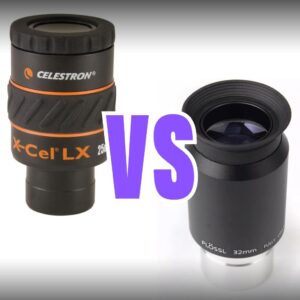
25mm vs 32mm Eyepiece: Which One Is Right for You?
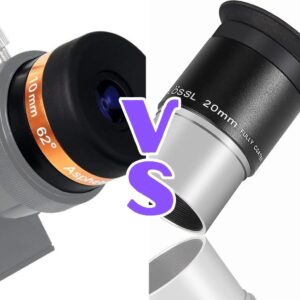
10mm vs 20mm Eyepiece (Eyepiece Battle)
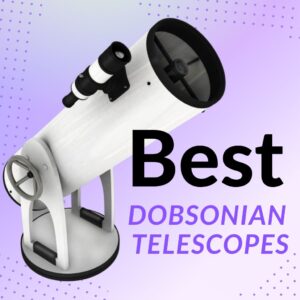
10 Best Dobsonian Telescopes (Ranked!)
Sitemap - Privacy Policy - Terms and Conditions

Review: Celestron TravelScope 70 Telescope
Author: Luna Gregoria
Updated: Nov 7, 2022
Ad Disclosure Advertiser Disclosure AstronomySource is an independent, advertising-supported astronomy website. We receive compensation for sales made for all telescopes that we recommend, but that doesn't affect our editorial decisions. We have affiliate partnerships with Amazon, HighPointScientific, and Telescope.com
When it comes to the telescopes we review, our editorial board (which is comprised entirely of astronomers) make unbiased judgments. Please keep in mind that our performance rating system on this page is completely unrelated to any kind of monetary gain.
I want to like the Celestron TravelScope 70, I really do. I have had fun with it. But I just can’t recommend it to beginners for astronomy. And though I’m not an expert on daytime spotting scopes, I’d probably advise against getting one for that purpose as well. It is a nice optic ruined by poor mechanical design and accessories, and unless you’re willing to spend more time and money replacing its accessories (or if you have them already lying about, as I do), I can not recommend it.
The advertising on the box describes it as a nature observing telescope which can be used for casual astronomy. This seems to sort of explain (or disclaim) some of the... peculiarities of this instrument.
Total Score
5/10: Downsides outweigh upsides
Score Breakdown (out of 5)
Moon & Planets: 3
Rich Field: 3
Accessories: 3
Ease of use: 2
Portability: 5
Read our scoring methodology here .
- A nice 70mm f/6 achromatic objective.
- Lightweight and portable.
- Sturdy enough.
- Decent eyepieces.
- Stopped down effective aperture.
- Useless optical finderscope.
- Terrible 45-degree erecting prism.
- Useless, extremely wobbly tripod.
The Competition
I picked mine up used for $50, and I think at that price it’s just about right. But at full price? There are better options in most cases.
If you want a telescope that is small, lightweight, and very easy to use, consider the Orion SkyScanner 100 or Zhumell Z100, a 4” tabletop reflector. And at this price point, if you want to scan wide fields of view across the sky searching for bright deep-sky-objects and star fields, consider a pair of binoculars instead. A 10x50mm or 7x50mm pair of binoculars have the same overall light gathering.
Our Verdict
If you’re already a telescope owner, this might be a good portable option for you, for the same reason as the ST80. I find the TravelScope 70 is lightweight enough that it plays much nicer on photo tripods than the ST80 that I own, and despite getting the ST80 specifically as a grab-n-go scope, I found that I would end up taking the TravelScope 70 outside instead, especially if I wanted a peek at something behind the trees, visible from a different part of my yard. It’s a bit like a ShortTube 70 , in overall design and in application, and for an astro-tinkerer you may be able to fix some of its shortcomings.
But for a beginner? There are probably better options. Even Celestron’s TravelScope 80, though it has some similar bad accessories, has the beloved Synta-made ShortTube 80 optics and mechanical design, and it’s only around $20 more expensive. Meade’s AdventureScope 80 is like the TravelScope 80 but with a marginally better diagonal. (And if you’re considering getting a TS80 or AS80, why not go for the fully kitted out ST80-A or ST80-EQ?)
Just be sure, before you buy, that you’re ok with buying a telescope without a tripod or mount, because that’s effectively what you’ll be getting--the tripod must be replaced to do astronomy with it, and should probably be replaced even if you just want a daytime spotting scope. Treat it as an optical tube and eyepieces only.
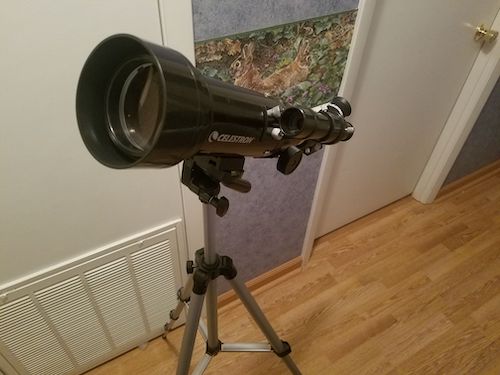
Celestron Travelscope 70
Rating: 2.5/5
The Tripod of the Celestron TravelScope 70
I have some bad news and some good news.
I normally discuss the optics first, but I’m going to address the tripod first this time, because it is the most important thing to beware of with this telescope. The tripod belongs in the trash . It might work, barely , for a small point-and-shoot toy camera. But a telescope will magnify any small wobble and cause the image to shift and shake tremendously. Even at low magnification, I found that it was almost unusable, but I could just about find focus. At 40x, I couldn’t even find focus–any tap of the focuser knob sent the image into several seconds of shaking. The mount head is soft and plastic, and it feels like it wants to break instead of move where I want it to. It is hopelessly unbalanced in the altitude axis, which means pointing above about 45 degrees is futile. (Of course, for reasons I’ll get into, it’d be futile anyway). It’s also so short that even when fully extended, I had to take a chair out and sit down to reach the eyepiece. It’s too short even for terrestrial use, pointing around the horizon.
That was the bad news. The good news is that the TravelScope 70 is small enough that it can easily be used on any good tripod. So if you already have a nice and sturdy tripod, tall enough for the mount head to get above your face when observing while sitting down (or ideally, when standing as well), then the TravelScope 70 will probably work fine there.

The TravelScope 70 has an achromatic lens objective with an aperture of 70mm and a focal length of 400mm. Its lens elements are nicely coated without bright reflections. My impression is that, for the money, this is a pretty great objective lens. It won’t hold up to any 70mm Apochromat, but you get what you pay for.
There are a few problems with the mechanical design of the TS70. First of all, the (non-collimatable) lens cell, which is similar in design to the ShortTube 80’s and some other cheap achromats I’ve seen, was tightened extremely tight. I put in a lot of elbow grease to loosen the lens cell. The trouble is that this tightened lens cell actually bends the glass, creating “pinched optics.” You might not think glass can bend, but you’re only allowed to bend by 1/1000th the width of saran wrap, so screwing the lens cell down so tight makes the image noticeably fuzzier at high powers. In fact, I’d go so far as to say that the image at first was a mess. After loosening the lens cell just enough that I could hear a slight rattle when shaken (but not too much so that the scope would never be collimated), the image was much cleaner and sharper.
When testing the optics, I did so with and without the 45-degree erecting prism, and I found that without the prism, the image is actually pretty good. It’s got some spherical aberration (in the star test it looks pretty bad, but in actual use, it’s not too noticeable, definitely not at 40x given by the stock 10mm eyepiece) and it is a little rough. It remained out of collimation. It is possible (though tedious) to fix collimation in a lens cell like this, but it wasn’t bad enough to worry about.
The biggest optical problem in the telescope tube is actually part of the mechanical design of the telescope. The focuser used seems to be identical to the one used on a long-focus 70mm achromat, so it’s too long, and it actually protrudes into the light path. For some positions of the focuser, the entire 70mm objective is visible, for others it’s restricted to perhaps only 60mm! Overall, the aperture is probably around 65mm when used with a mirror star diagonal . It’s 60mm or less when the stock prism diagonal is used, since it takes up more focuser travel and vignettes the light path. It may be possible to saw off part of the focuser drawtube to fix this oversight. I haven’t done this for the review. This is a frankly embarrassing error to make since, as far as I can tell, the quality of the objective is easily good enough to justify making full use of all 70mm of it.
The Accessories
The two eyepieces are a 20mm and a 10mm Modified Achromat (a variant of a Kellner eyepiece that has three elements). They have fairly wide fields of view, sharp centers, and passable edges. They’re nothing special, but they’re far better than what many beginner telescopes come with, and they definitely work for this purpose.
The TravelScope 70 comes with a black nylon bag that can hold the tripod and telescope. It’s a nice extra, and it might have come in handy if the tripod that’s meant to go with it was any good. If you get a nice, but small, tripod, you might make use of it.
The two real letdowns among the accessories are the finderscope and the prism diagonal. The finderscope is ridiculous. Galileo’s telescope was probably better. These things barely belong in a McDonald’s happy meal toy, let alone a telescope. It is barely sufficient for sighting through it to find targets, but it isn’t usable on its own as a wide-field finderscope.
The biggest problem with the accessories, other than the tripod, is the 45-degree erecting prism, which goes between the focuser drawtube and the eyepiece. The body is made of plastic, and it feels cheap. It is both an ergonomic and an optical disaster.
Diagonals typically come in 45-degree angles (with erecting prisms) or 90-degree angles (either with a mirror or an erecting prism). This is because, if you imagine pointing a telescope with no diagonal at all high in the sky, you’d have to crane your neck uncomfortably to get your eye to the eyepiece. A 90 degree diagonal is preferred for astronomy since it allows a comfortable viewing angle even when pointed all the way to the zenith (top of the sky). A 45 degree prism can’t go above 45 degrees before you have to start looking up into it. However, 45 degree prisms can be preferred for nature observing if the tripod is tall enough. And for a terrestrial spotting scope, you do want an upright image. Mirror diagonals will show a mirror image, but don’t degrade the image as much. Because the tripod is so short, a 90 degree erecting prism would have been preferred.
The problems don’t stop with ergonomics. Unfortunately, it also degrades the optics of the telescope. The view of the Moon was plenty sharp with a mirror diagonal installed, but going back to the prism, the view became blurry and there was a lot of chromatic aberration (false color fringing). It’s adequate for viewing at low powers, but it causes very noticeable fringing before you even get to 40x. The prism itself is miscollimated–looking into the prism, the view of the objective lens is off-center, and that means you’re getting even less light.
Upgrading the Accessories
Upgrading the eyepieces is a low priority, as they should serve you for a while.
The finderscope should be replaced with a red dot finder. Red dot finders have no magnification at all, they just project a red dot through a small lens/window onto the sky and use some optical trickery to make it look like it’s “at infinity.” (There’s no parallax). When upgrading, be sure to find one with a compatible mounting foot. The mount is done with two screw-stalks that stick up out of the optical tube, the finder mount slips over them, then two thumb-nuts are screwed onto the stalks. This is the same finder mounting system used by other telescopes like the FirstScope/FunScope, Orion SkyScanner, and more.
Finding objects can be done at low power with the telescope itself—it is its own finderscope.
Upgrading the tripod is the most urgently needed fix, but decent tripods are pretty expensive. Don’t buy the scope unless you already have a decent tripod. If you already have the scope and want an upgraded tripod, don’t spend more than $100 on one. For around $100-150, there are better telescope options altogether.
The prism diagonal is the next most urgently needed replacement. Keep it around for comparison or for when you want to do terrestrial observing, but it’s just no good for serious astronomy.
For astronomy, you want an economical mirror star diagonal. Don’t go too expensive, you just need a cheap $30 or so 1.25” diagonal to get the job done. The views of the Moon, planets, and double stars will be sharper and more color free, and you’ll be able to use longer-focus eyepieces with wider fields of view, and you’ll be able to use more of the telescope’s aperture. And to top it all off, it’ll just be more comfortable to use.
General Use
After my first half hour using the telescope, I was exhausted trying to work around its awful mount. However, in that time, I was able to observe the Double Cluster in Perseus, the Orion Nebula, and the Andromeda Galaxy, and I was pleased enough by them to not immediately write off the telescope as a failure.
After a rest indoors, I set the telescope up again with my good tripod, the mirror diagonal off my Orion ST80, and a red dot finder, and I went out and had a lot of fun with it. It isn’t a powerful telescope, but I personally enjoy small telescope observing quite a lot. The wide-field views you can get with small short telescopes make up for the small aperture, so you can fit a lot of stars in the eyepiece.
The Orion Nebula showed its bright core easily, though somewhat softly, and hinted at the tenuous outer layers of gas and dust. Three stars in the trapezium were easily resolved, and the fourth wasn’t too difficult at 40x. At low power, the entire Orion’s Sword stellar association is visible and very pretty, with the nebula showing up as a fuzzy blob in the middle.
I was not able to see any details in the Andromeda Galaxy M31–the satellite galaxy M32 was only suspected, and there was no hint of the fainter M110. All I could see was a ghostly pale core of the galaxy, and this was the one object that was especially disappointing in comparison with what other small scopes of mine had shown.
Some of my favorite small scope targets are the open clusters M35, M37, M36, and M38, which follow a line up from Castor-Twin’s Foot in Gemini up to the middle of Auriga the Chariot. M37 and M36 can be seen together in the same field of view with a wide field 32mm Plossl eyepiece (though not together with the stock 20mm), as well as M36 and M38. The appearance of these clusters is a fuzzy blob that can be resolved into a glittery mess, with varying degrees of sparkle and fuzziness. Each of these are groups of young stars just spreading out into the Milky Way, and they are observed best in winter and spring.
I was able to see the Clown Face Nebula, though it required a higher magnification of 67x to resolve it as a planet-shaped nebula instead of a star, I only suspected it was a nebula at 40x.
I was even able to observe M81 and M82, a pair of galaxies in Ursa Major.
I went out one night to compare my Orion ShortTube 80 (optically identical to the Celestron TravelScope 80’ s objective lens) with the TravelScope 70. By my calculation, the difference between the two shouldn’t have been especially noticeable, but it definitely was. The view of Caldwell 64, the Tau Canis Majoris Cluster, was so much dimmer than the view through the ST80 that it required averted vision to suspect there was more than one star, whereas the ST80 showed it with a sparkly halo easily. The ST80 could just barely do the two bright components in the Leo Triplet, while I couldn’t see them at all in the TravelScope 70. The overall character of the images was the same (to be expected when observing at the same magnification), but the TS70 was dimmer than it should have been, which confirms that the effective aperture was stopped down.
If you go in with the correct expectations (objects will be dim and gray) and look for the right objects (look for objects in guides for small telescopes and binoculars, rather than the famously named nebula you’ve seen in pictures), the telescope can work just fine for deep sky viewing from a suburban or darker sky. In a rural sky, it’d be powerful enough to see every one of the Messier objects. I find that it’s much easier to find and appreciate deep sky objects in a small scope after you’ve gotten familiar with deep sky observing in a larger telescope. But there’s no reason you can’t start small if you set your expectations right.
As I write this, there are no planets worth looking at (Mars is a dot in even the largest telescopes), so the only high-resolution tests I could put the telescope through were of double stars and the Moon.
At high power, the focuser is loose enough to reveal a bit of image shift as you rack the focuser in and out. Without shimming the focuser, this means maintaining good collimation will be difficult. Other than that, the focuser isn’t wobbly or loose, and even at high power, I can find best focus pretty easily.
With the 45-degree prism, the Moon was aesthetically pretty at low powers but a bit of a rainbow mess at 40x and higher. With the mirror diagonal, the moon became much sharper and you could really begin to appreciate its features. I found the 40mm sub-aperture-mask dustcap it comes with wasn’t really needed; it’s plenty sharp enough even at 67x, and there’s no chromatic aberration noticeable until you overpower the scope to about 167x. (Maximum useful power would be around 100-130x) It held its own against a cheap 70mm long-focus achromat and the ShortTube 80.
At one point, while observing, I dropped the telescope about 5 feet onto the floor. There seems to have been no damage. The story might’ve been different on concrete, but I like the scope enough that I don’t want to intentionally drop-test it.
Leave a Comment Cancel reply
Save my name, email, and website in this browser for the next time I comment.

Since 2011, we've published astronomy related content and reviews to help guide the community better.
Our Astronomy Experts
Our Review Process
How We Make Money
© Astronomy Source 2011 - 2024
Privacy Policy
Terms and Conditions

IMAGES
VIDEO
COMMENTS
In terms of astronomical targets, the Travel Scope 80 provides a good view of the Moon, with craters in shadow providing a sharp contrast to the sunlit surface. Earthshine, where the darkened, unlit portion of the Moon's surface is visible, is also worth a look. According to Celestron's website, the Travel Scope 80 has a theoretical maximum ...
Overview. If you're looking for a fun, easy-to-use, and portable telescope, the Celestron Travel Scope in 80mm is likely to be a perfect fit. This isn't a scope for a committed astronomer but it is quick to set up and easy to transport, making it ideal for family holidays. And, at this price point, you really can't go wrong.
Celestron Travel Scope 80 tech specs. Aperture - Diameter of the main lens.. Focal length - Distance traveled by the light from the main lens to the exit point.. Focal ratio - Focal length / aperture. Or how "fast" the telescope is. Maximum magnification - The limit at which the telescope won't reflect any more detail. Magnification is determined by the focal length and the ...
The Travel Scope 80 is a refractor telescope perfect for terrestrial and celestial viewing on the go. The Travel Scope can view the planets, moon, star clusters and brighter deep sky objects like the Orion Nebula and Andromeda Galaxy at night. The erect image star diagonal makes the optical tube ideal for using as a spotting scope during the day.
Hi all, this will be a very honest review for the Travel Scope 80. Aperture diameter: 80mm, Focal length: 400mm, Eyepieces provided: 20mm (x20), 10mm (x40). Diagonal provided: Amici type prism with fully erect image and corrected left-right. Also provided is a tripod with AZ mount and backpack.
9.5/10. Portability - 10/10. 10/10. Mount - 9.2/10. 9.2/10. 9.5/10. Summary. This telescope has been a bestseller for Celestron for years now. When talking about a telescope just under the $100 mark it's easy to understand why it's a market favorite given the included backpack and smartphone adapter as well as a sturdy enough tripod.
Amazon.com : Celestron - 80mm Travel Scope - Portable Refractor Telescope - Fully-Coated Glass Optics - Ideal Telescope for Beginners ... Grab the Celestron Travel Scope 80 and go anywhere—from your backyard to another continent. Ample optical performance is packed and ready in this ultra-portable backpack kit. ... Customer Reviews : 4.2 out ...
Reviews & ratings: Celestron Travel Scope 80, Portable 80mm Refractor Telescope with Smartphone Adapter MFR: 22030. Buy now & save $54. Aperture: 3.2" (80mm), Eyepiece Diameter: 1.25", Series: Celestron TravelScope, Type: Refracting ... Celestron Travel Scope 80, Portable Refractor Telescope w/Smartphone Adapter 3.9. 18 reviews. SKU: CNT80 MFR ...
Find helpful customer reviews and review ratings for Celestron 22030 Travel Scope 80 Portable Telescope with Smartphone Adapter and Backpack,Black at Amazon.com. Read honest and unbiased product reviews from our users. ... Style: Travel Scope 80 with Backpack Change. Write a review.
The Travel Scope 80 is a refractor telescope perfect for terrestrial and celestial viewing on the go. The Travel Scope can view the planets, moon, star clusters and brighter deep sky objects like the Orion Nebula and Andromeda Galaxy at night. The erect image star diagonal makes the optical tube ideal for using as a spotting scope during the day.
Product Description. Celestron Travel Scope 80 Portable Telescope with Smartphone Adapter The Travel Scope 80 is a refractor telescope perfect for terrestrial and celestial viewing on the go. The Travel Scope can view the planets, moon, star clusters and brighter deep sky objects like the Orion Nebula and Andromeda Galaxy at night. What You Get.
Review. Celestron Travel Scope 80 is a telescope that was manufactured to be as cheap as possible. This brings with it a lot of plastic parts and low-quality optics. Around this price range, it is really hard to find a compact telescope that is able to provide stability and optical quality. A tabletop reflector is the closest thing to ...
Celestron Travelscope 80/Astromaster 80 - posted in Refractors : So, Celestron has recently released an 80mm Travelscope and an Astromaster 80. Both have an FL of 400mm. The travelscope seems to be the same as the Meade Adventurescope 80 which I have heard is the same as the Orion 80ST and in turn have heard that they are all made by Synta. The Astromaster however, looks like a mini version of ...
Maksutov-Cassegrain telescope. 4.4-pound weight. Lifetime warranty." Best for Entry-Level Users: Levenhuk Skyline Travel 50. "A compact and basic option for beginners and/or kids, this telescope comes at a very affordable price, yet sports a lifetime warranty and is overall easy to use.
Current Price & More Info https://amzn.to/341wUIO ️ Canada Link https://amzn.to/3lOzMPf ️ UK Link https://amzn.to/3iYVrT5 Celestron - 80mm Travel Sco...
Navigate the night sky with smooth precision using pan handle Alt-Az control with clutch. Adjust the clutch in an up/down or left/right manner to track any object in the eyepiece. Accessories Included. The Celestron Travel Scope 80 comes with 20 mm and 10 mm eyepieces, an erect image diagonal, finderscope, smartphone adapter, and travel backpack.
Review Celestron 80. Buy Celestron Travel Scope 80mm f/5 AZ Refractor Telescope Kit featuring 80mm Refractor, 400mm Focal Length, f/5 Focal Ratio, Anti-Reflection Fully Coated Optics, 1.25" Rack-and-Pinion Focuser, Manual Alt-Azimuth Mount with Handle, 20x and 40x Eyepieces, 45° Erect-Image Prism, Universal Smartphone Digiscoping Adapter ...
The Celestron Travel Scope 80 is an excellent choice for camping enthusiasts who want a portable telescope for observing planets and galaxies. With its 80mm aperture, it offers good light-gathering capabilities. Its compact size and lightweight design make it easy to carry and set up during camping trips. 19. Orion StarBlast 6 Astro Reflector ...
Celestron - 80mm Travel Scope - Portable Refractor Telescope - Fully-Coated Glass Optics - Ideal Telescope for Beginners - Bonus Astronomy Software Package - Digiscoping Smartphone Adapter The Celestron Travel Scope 80 weighs just 3.3 pounds and assembles in seconds with no tools required. It's easy to use to navigate the sky.
The Travel Scope 80 is a refractor telescope perfect for terrestrial and celestial viewing on the go. The Travel Scope can view the planets, moon, star clusters and brighter deep sky objects like the Orion Nebula and Andromeda Galaxy at night. The erect image star diagonal makes the optical tube ideal for using as a spotting scope during the day.
celestron travel scope 80 review& moon. celestron travel scope 80 review& moon.
The TravelScope 70 has an achromatic lens objective with an aperture of 70mm and a focal length of 400mm. Its lens elements are nicely coated without bright reflections. My impression is that, for the money, this is a pretty great objective lens. It won't hold up to any 70mm Apochromat, but you get what you pay for.